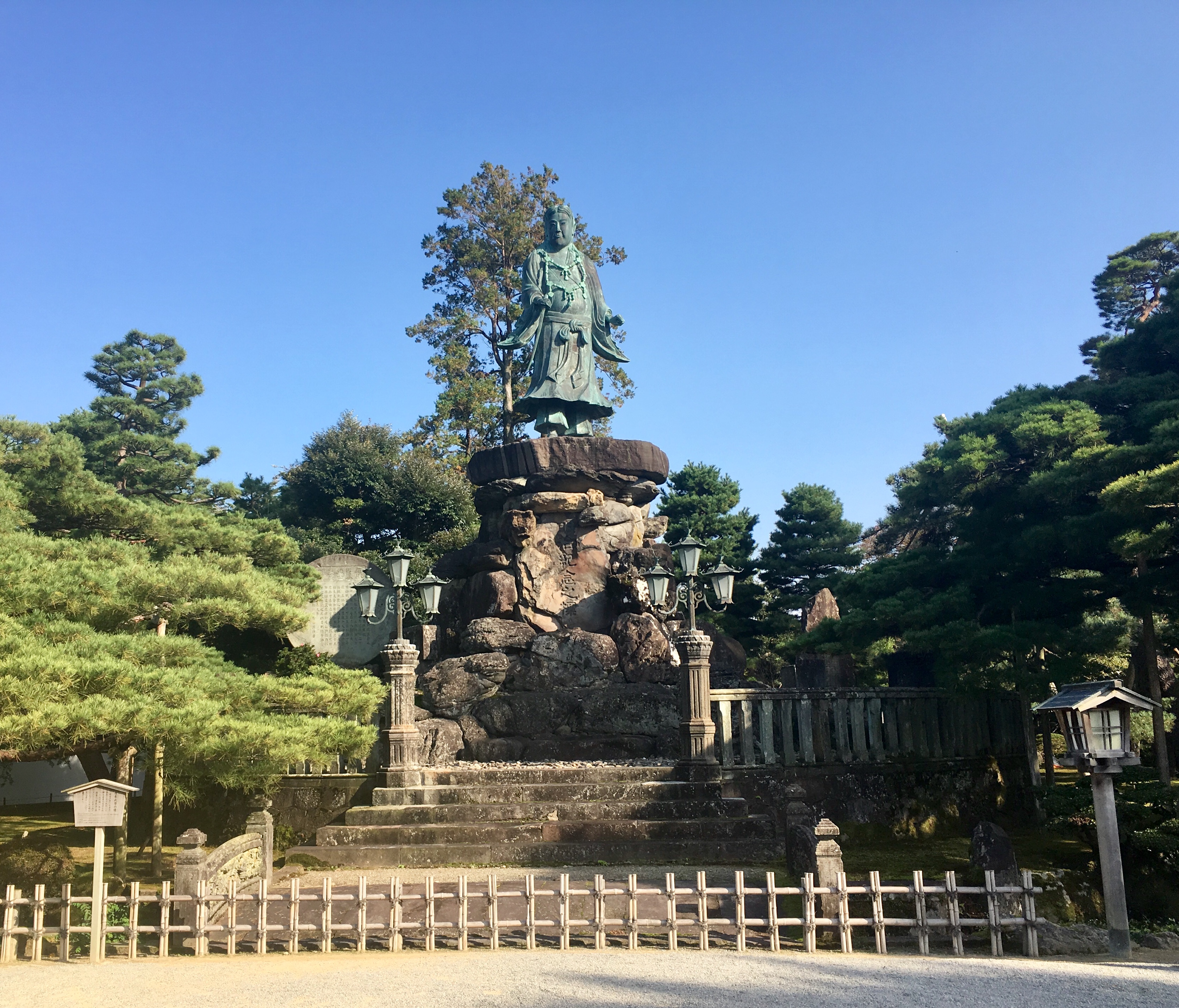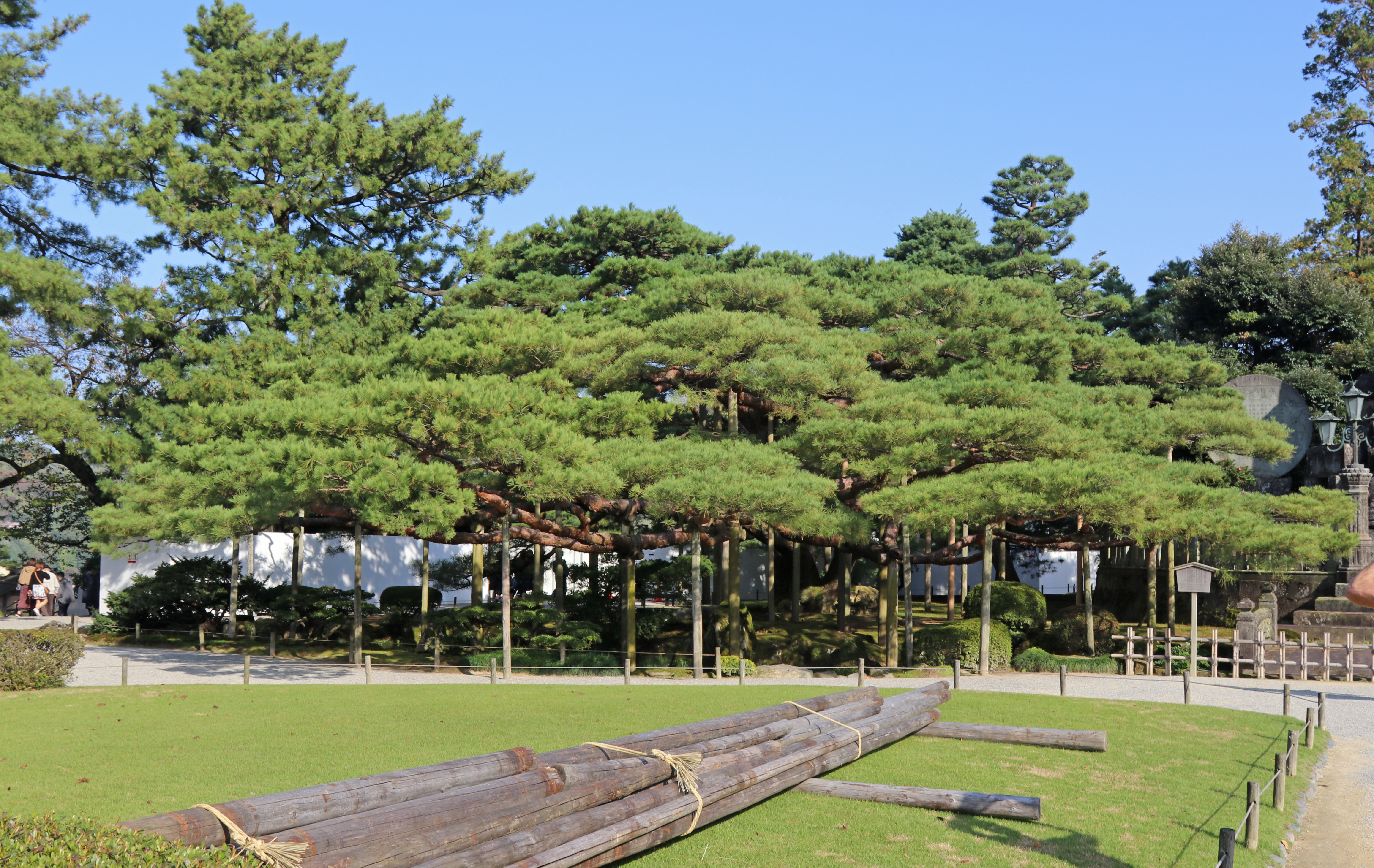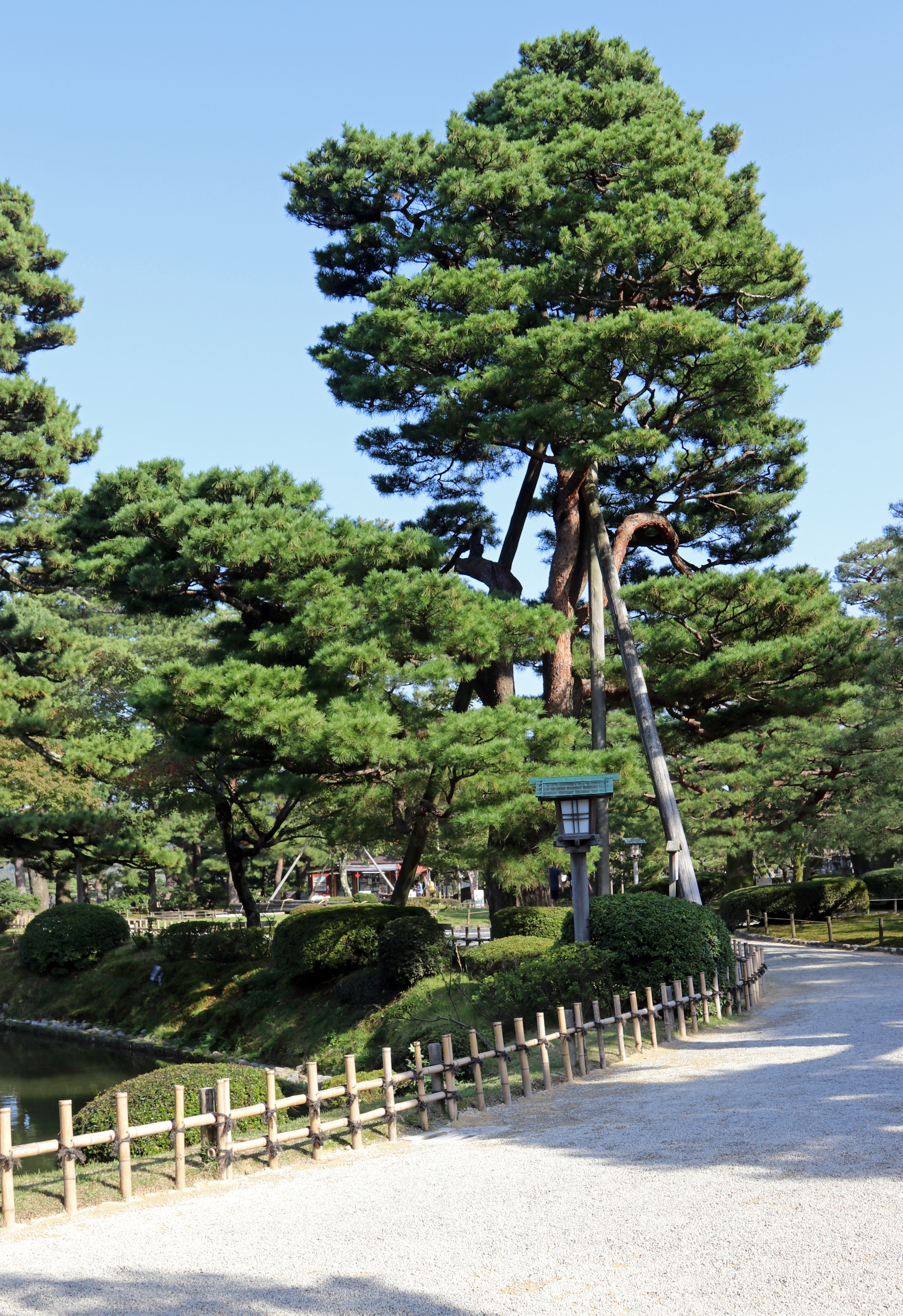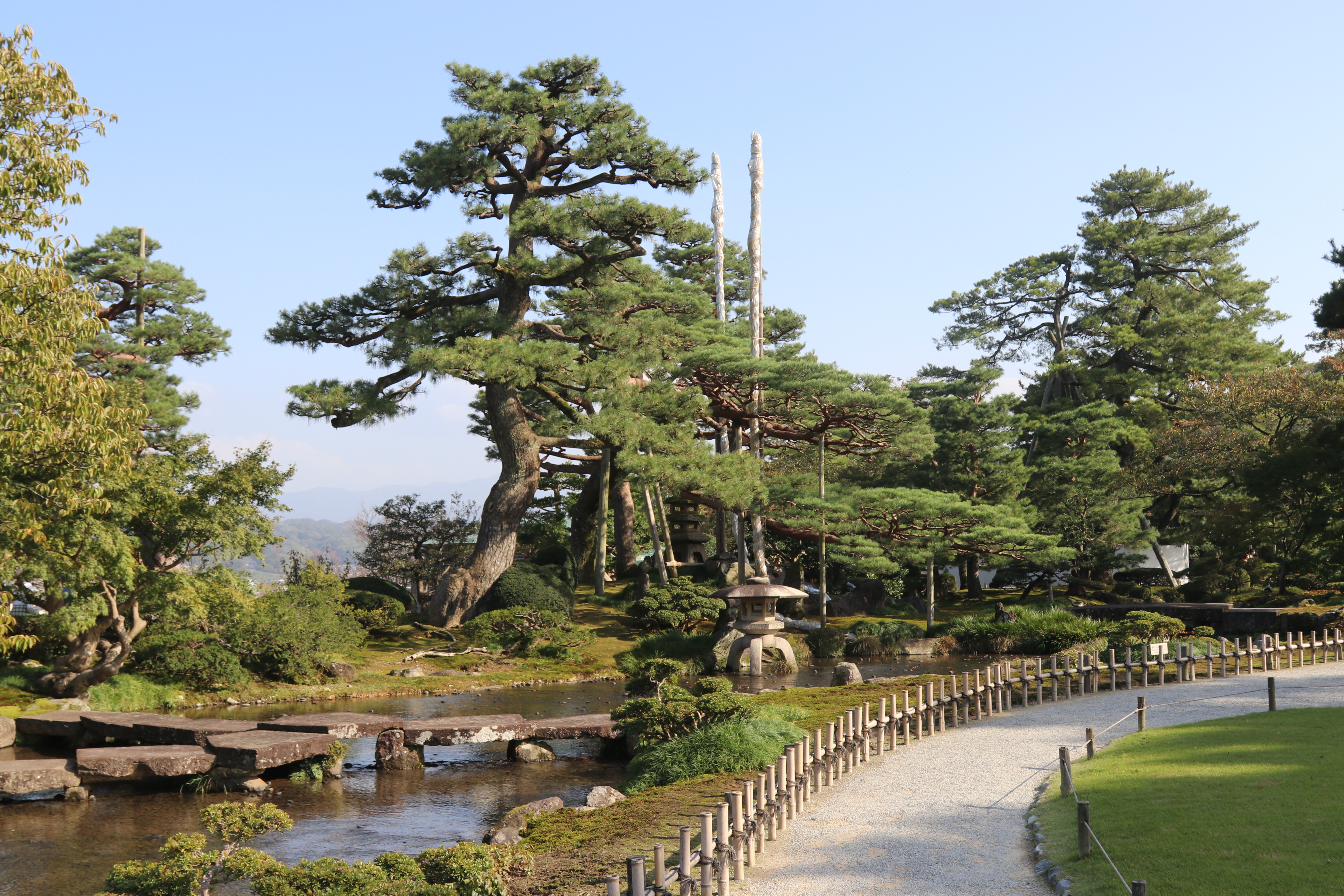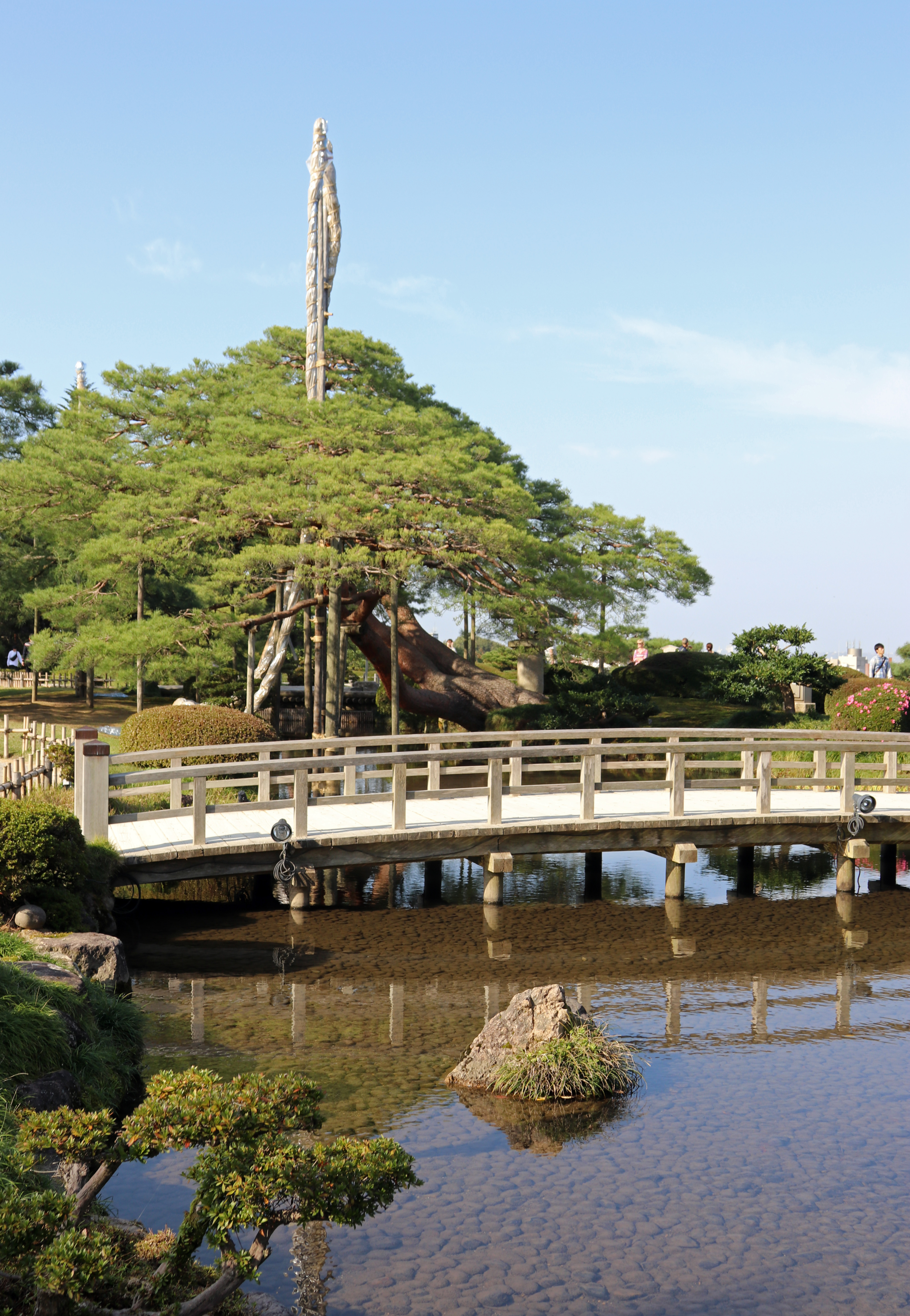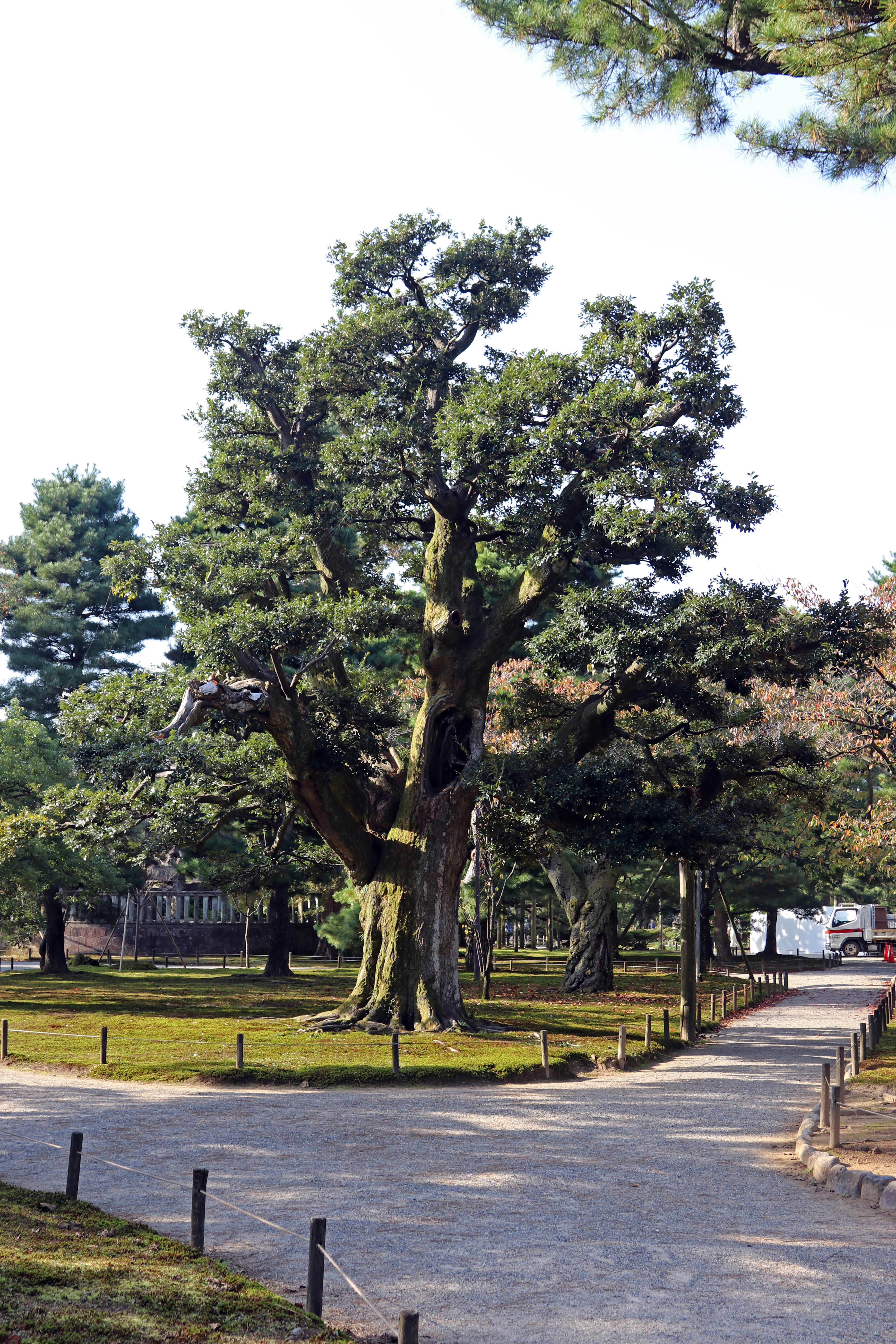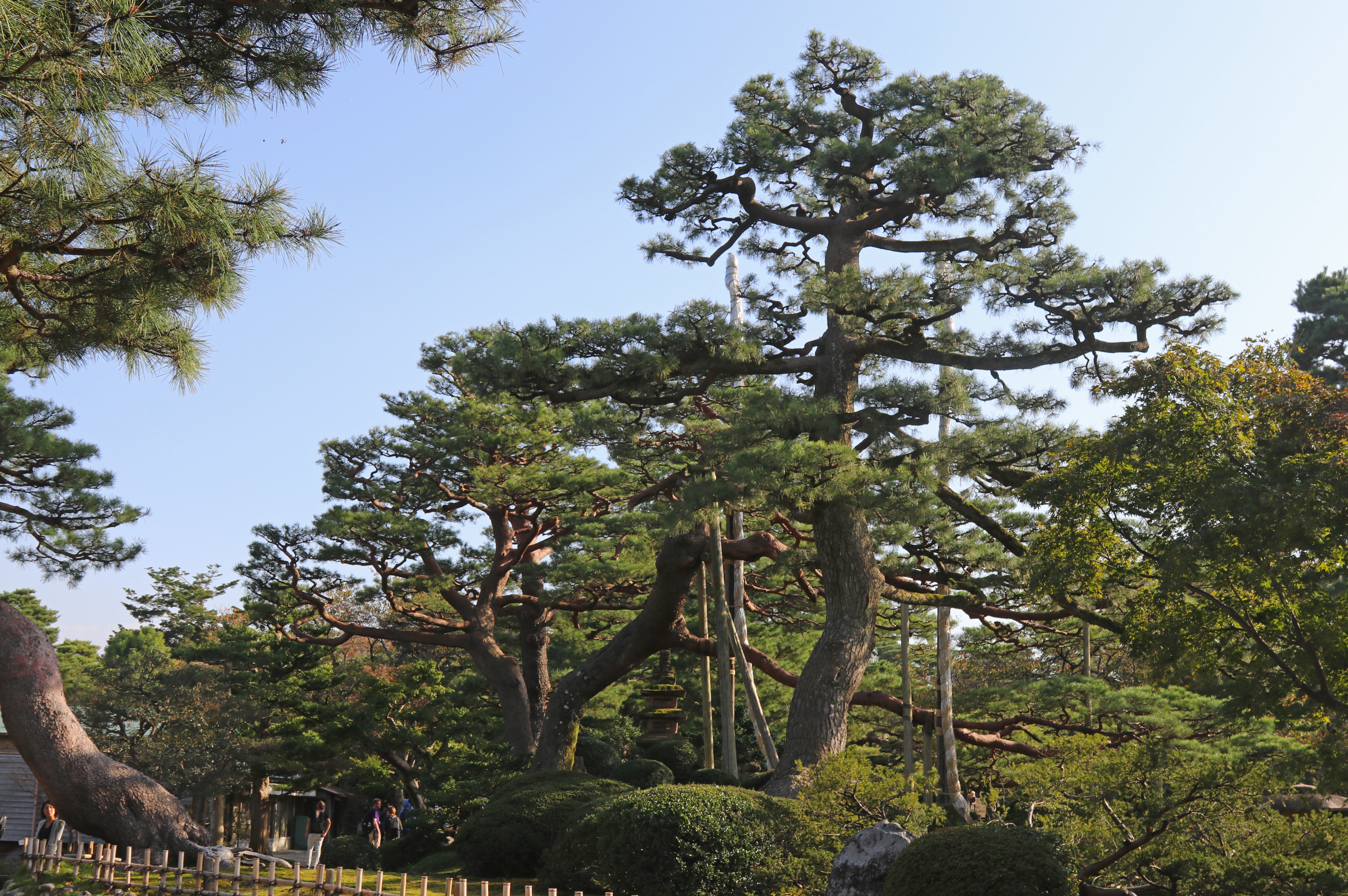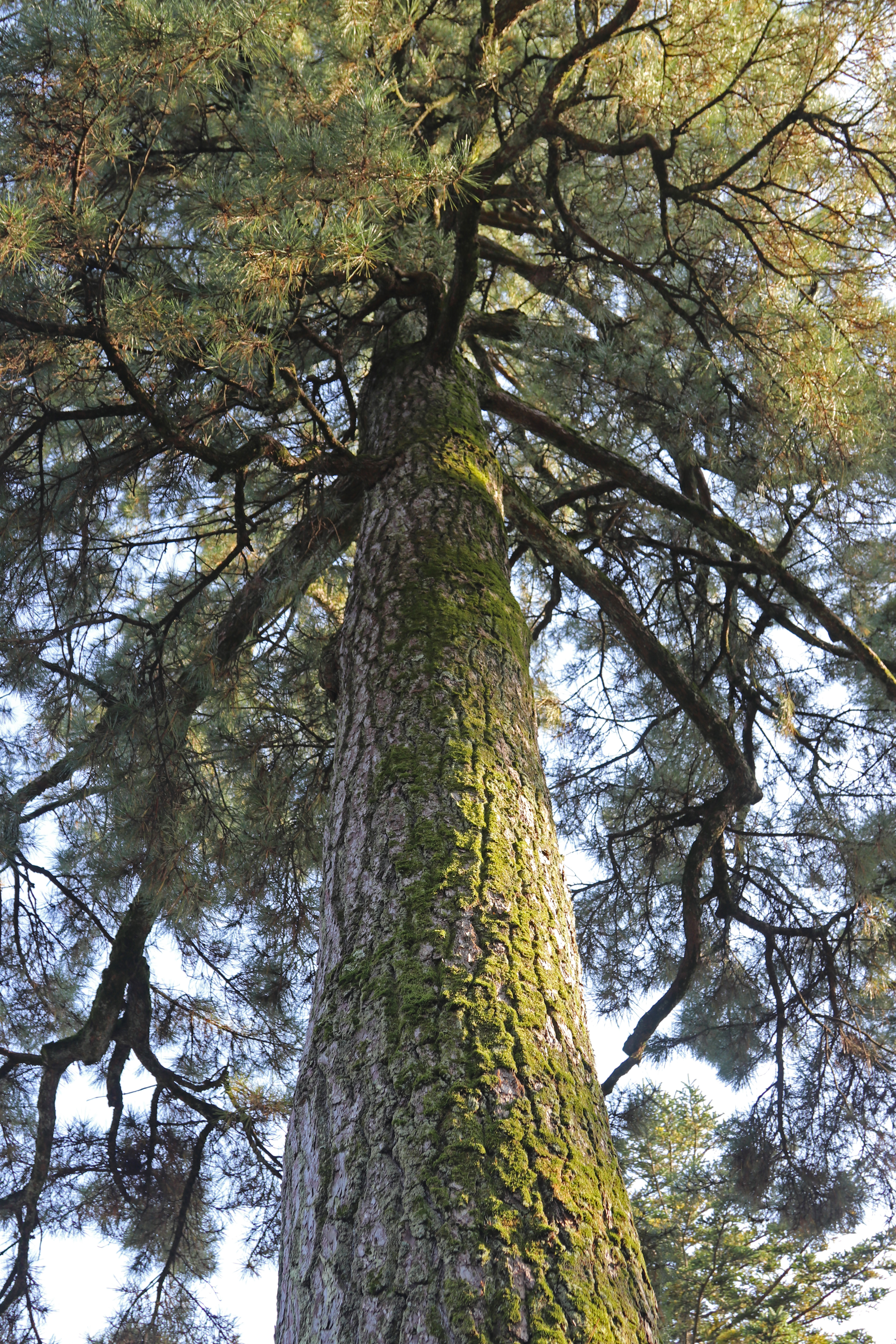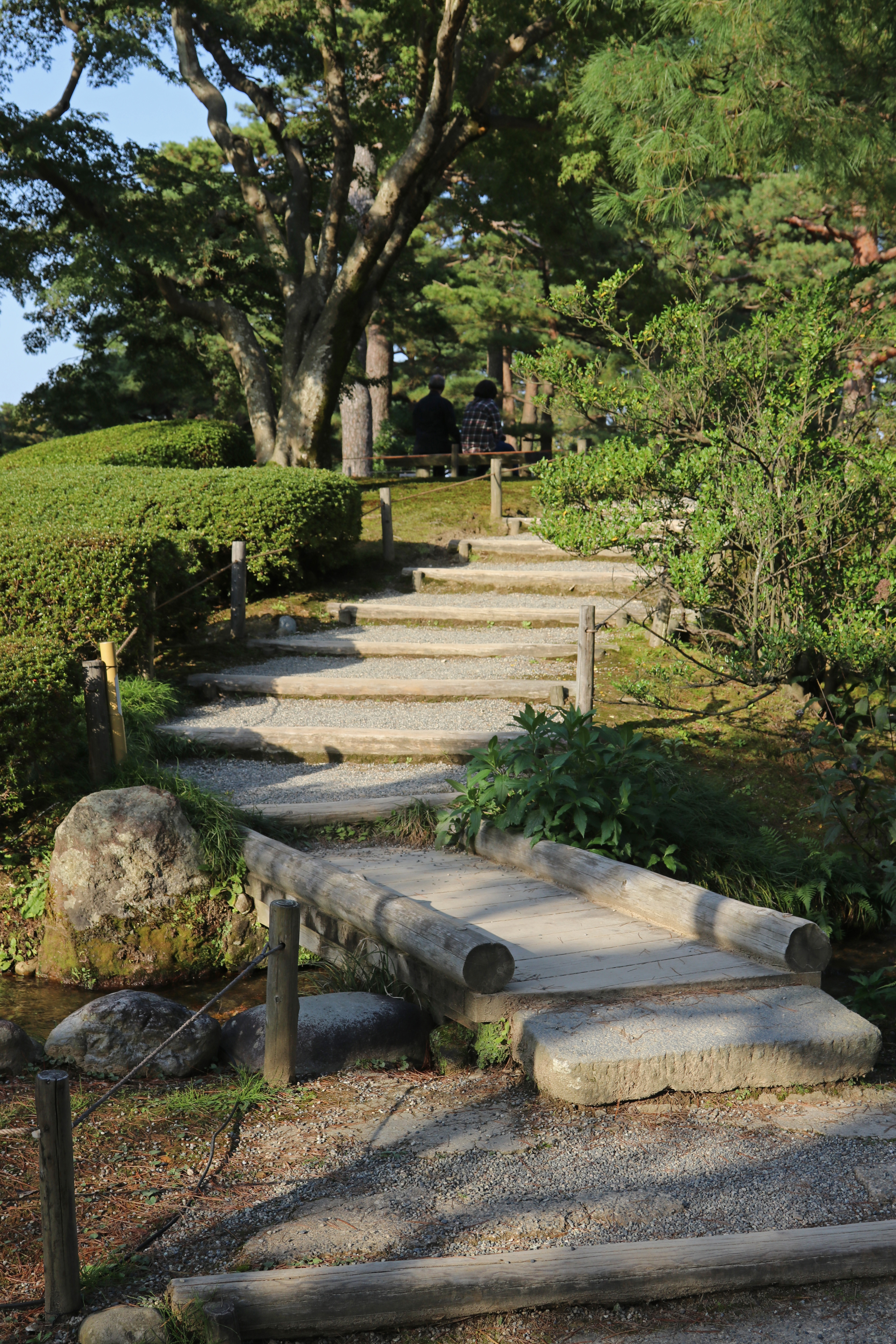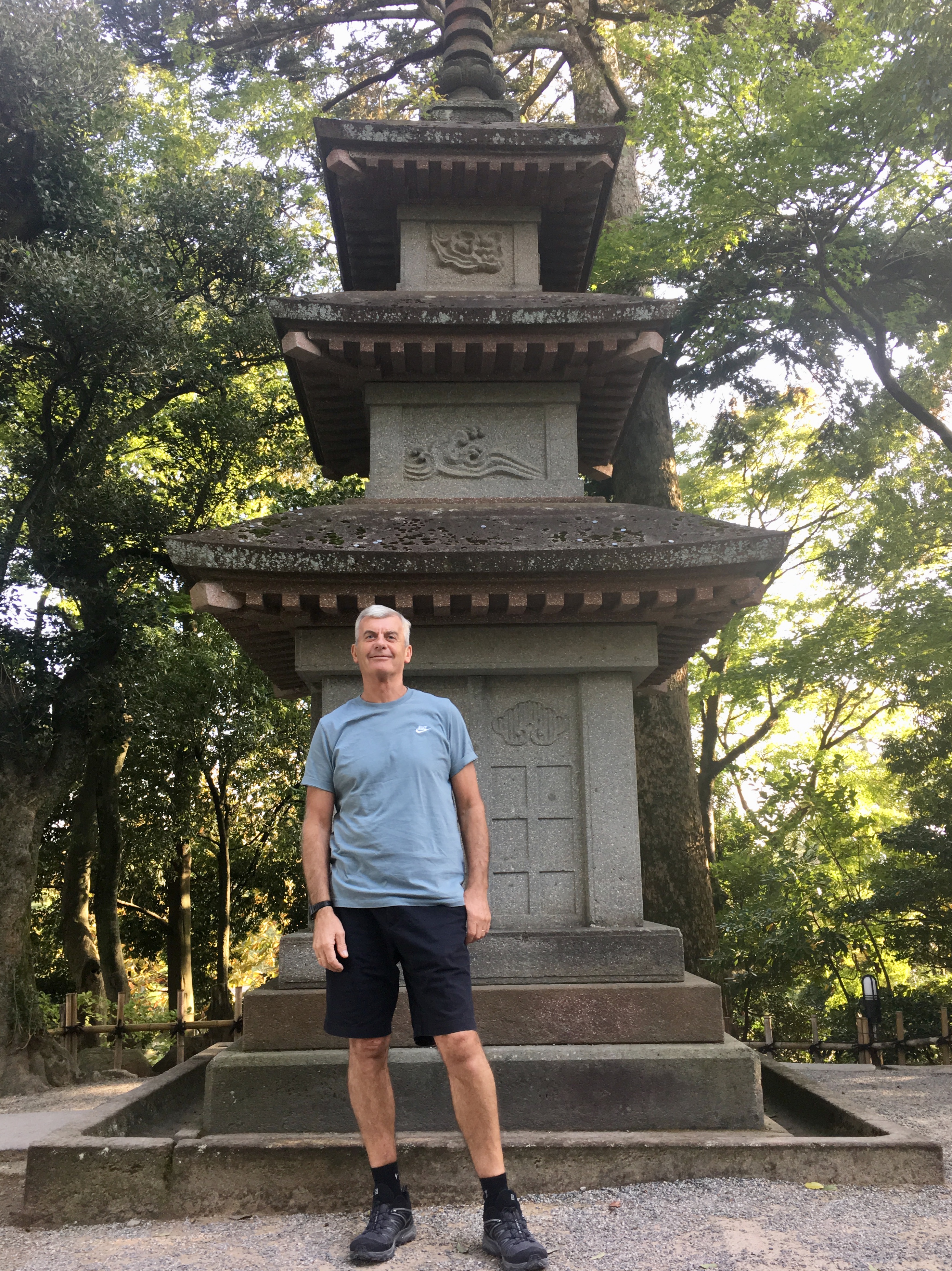Kenrokuen Garden
Once we arrived at Kanazawa station, we headed to
Kenrokuen garden on the way dropping our bags off at the hotel. Although late
October, we were once again fortunate enough to have some lovely weather, with
it being warm and sunny, even better than a summer’s day back home on the north
east coast! It only took us around 25 minutes to walk from the station to Kenrokuen’s
north and main entrance, named the “Katsurazaka Entrance” which is opposite the
Ishikawabashi bridge that leads to Kanazawa Castle. Alternatively, there are a
lot of buses to choose from that depart from Kanazawa Station, including the Kanazawa
Loop and Shuttle buses which takes around 20 minutes, city buses which take 15
minutes and the JR buses, which are covered by the JR Rail Pass.
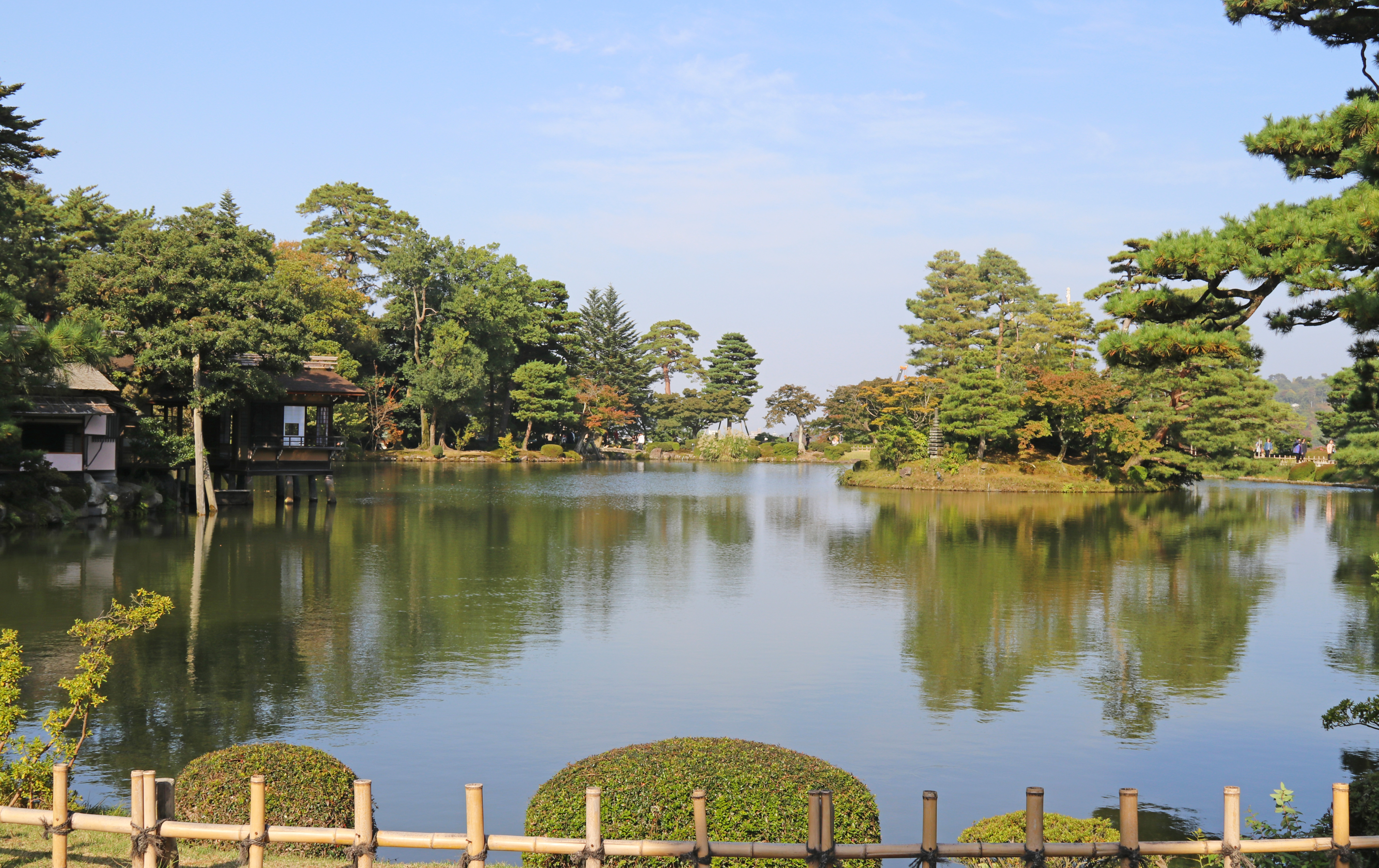
Kenrokuen is a strolling style landscaped garden with
the typical characteristics of a landscaped garden of the Edo period, ranked as
one of the top three gardens in Japan, designated as a National Site of Scenic
Beauty in 1922 and as a National Site of Special Scenic Beauty in 1985.
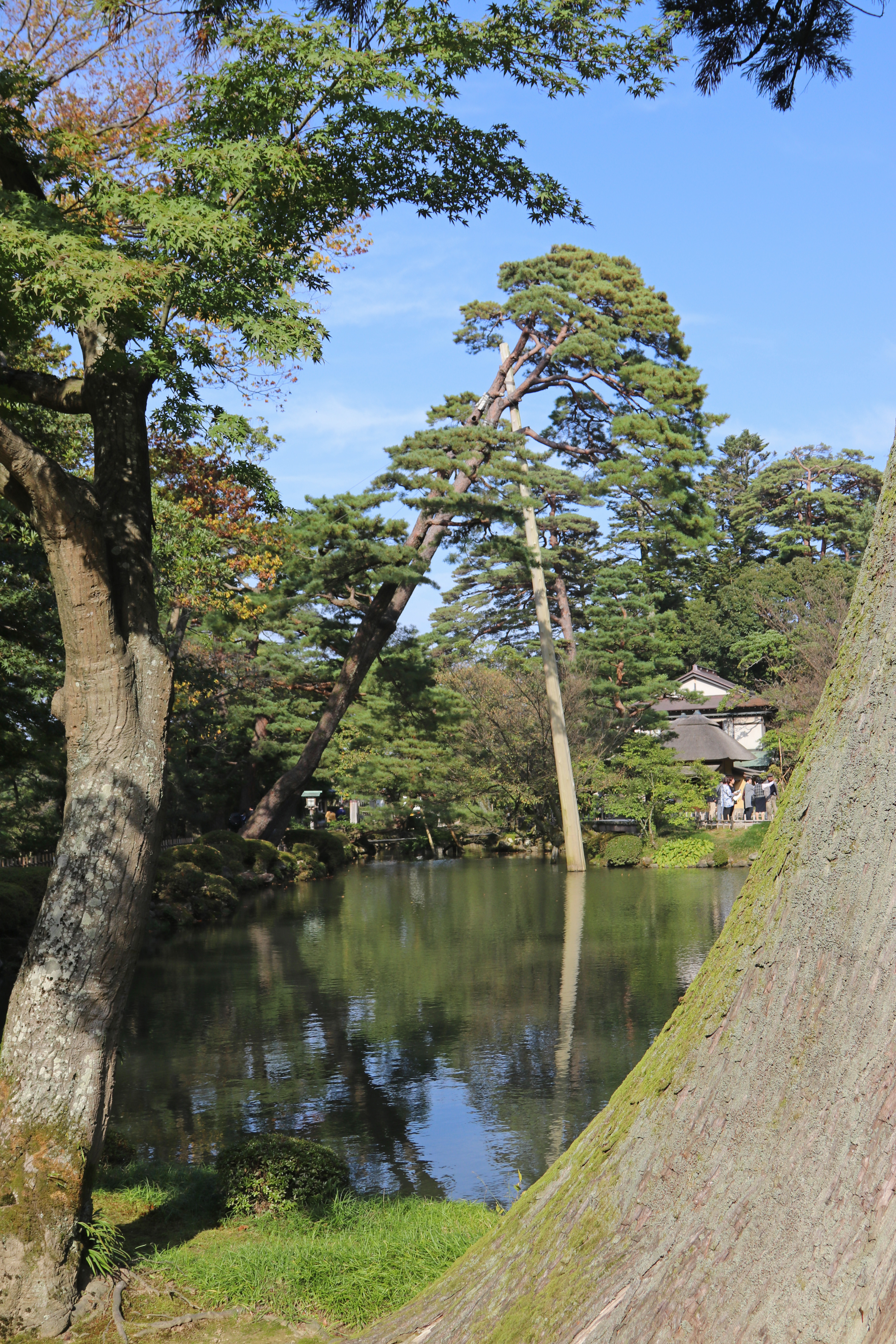
Upon entering the garden, we first followed the meandering paths past some small tea house and cafes along the western side of the garden which led us to the stunning Hisago-ike pond which was surrounded by massive pine trees, some of which were supported by very lage poles! This technique is seen throughout Kenrokuen and its so interesting how in Japan they tend to support their old trees in this way, and in high populated areas. Compared to back home in the UK where this technique would most likely be considered unsafe and open to liability! Which would mean an old tree near a road or footpath would have to felled if deemed it could no longer support itself safely. Which of course is a great shame… The technique of these supporting poles seems perfectly safe but guess these poles would have to be regularly checked… The Hisago-ike pond also featured a large water fall and a small authentic Japanese restaurant, which was built over the surface of the water.
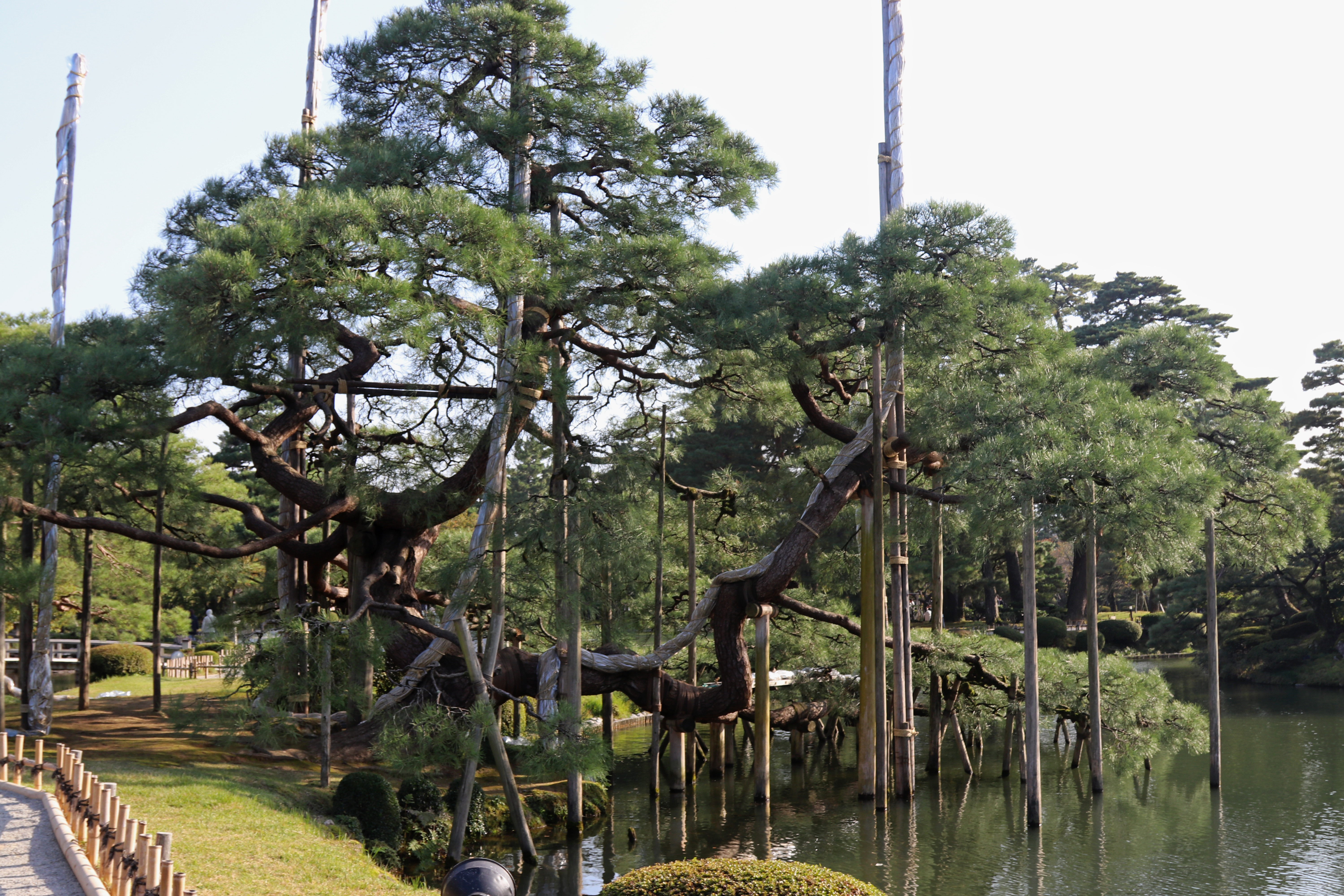
Walking around the Kasumigaike Pond to get a closer
look at the Karasaki Pine we spotted another one of Kenrokuen’s unique and
iconic feature, the Kotojitoro Lantern. The Lantern stands at over two meters
tall and uniquely build with two legs instead of one and stands at the northern
bank of the Kasumigaike Pond. Also,
in addition, another iconic feature in the garden, is one of Japans oldest
water fountains, which is situated below the Kasumigaike pond and works by the
drop in elevation creating the power needed to shoot out water 3.5 meters high!
Which is quite amazing! Interestingly
the water contained in Kenrokuen’s ponds and various streams are supplied by a
sophisticated water system that diverts water from a distant river which was
constructed in 1632.
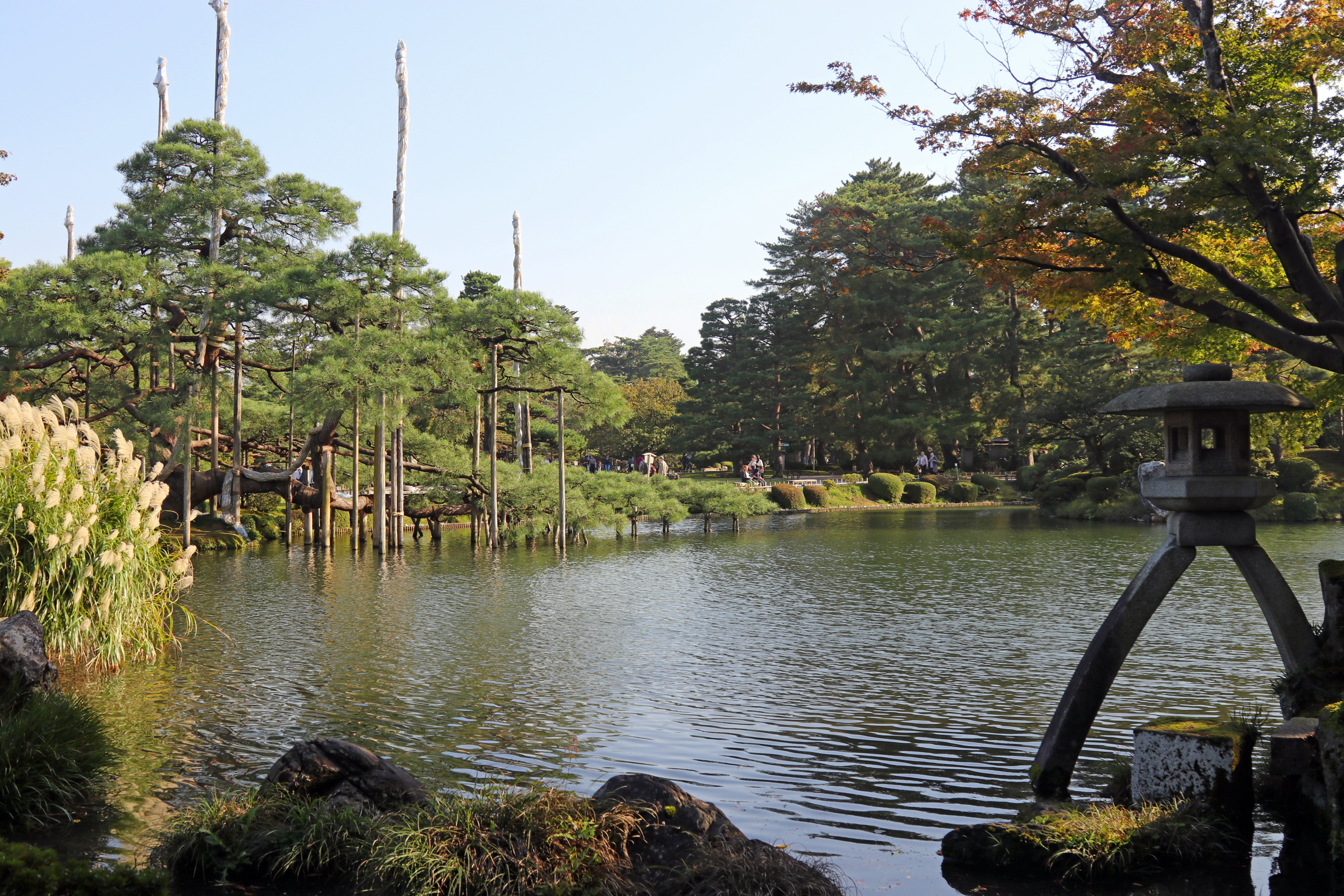
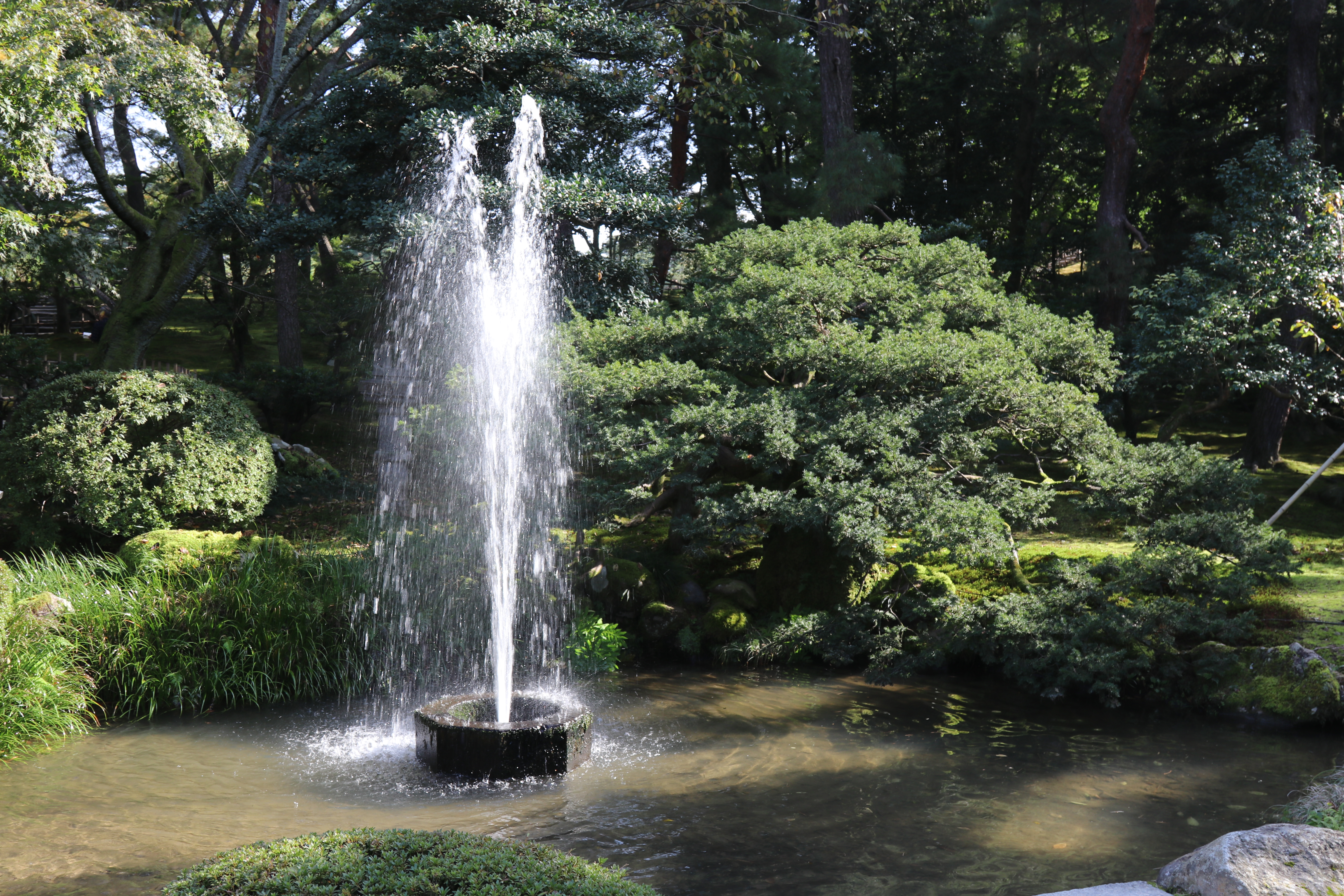
Midway through exploring the garden, we decided to take a lunch break…as we had purchased our lunch that morning in Kyoto, before catching the Thunderbird train! Within Kenrokuen there are plenty of places to seat, so we found what we thought was a good spot for our lunch…so out comes the sandwiches! We were both sitting enjoying the scenery eating our sandwiches and talking to each other, when suddenly out of nowhere, something descended on us with great force, snatching a sandwich from one of our hands! “What was that!” At that very point a secondary school group was walking along the path in front of us, of which they all jumped back in amazement, shouting and pointing at the sky! Looking up in the sky, there was a massive Black Kite, holding a sandwich! On closer inspection of the skies above us, unknown to us there were loads of Black Kites circulating us! So, we swiftly moved to an area under one of the large trees, so we could continue eating our lunch…but now keeping an eye and the sky! It’s safe to say, one of us had some sore fingers after the incident!
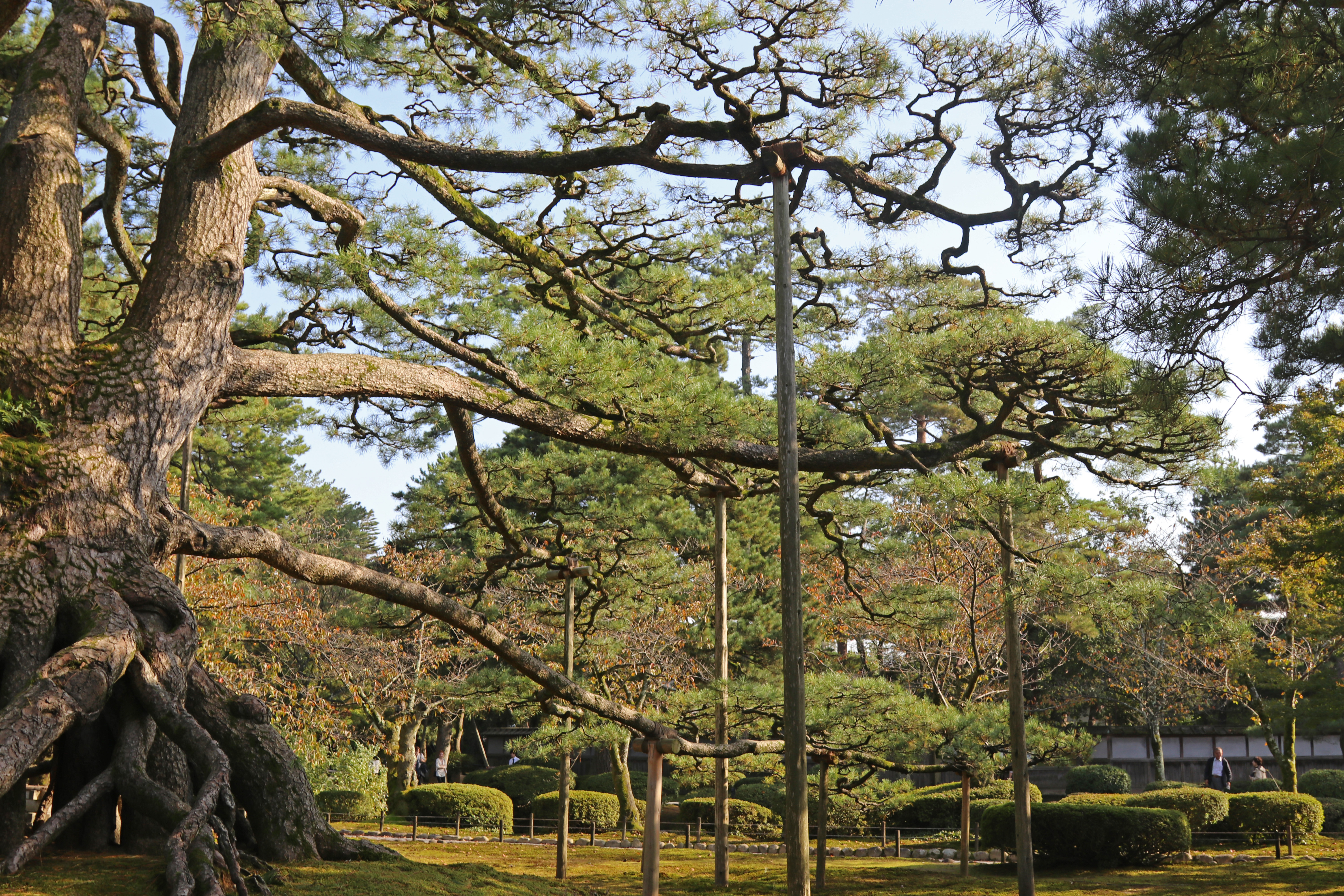
After our eventful lunch we continued exploring the vast garden! In the centre of the garden, we came across another iconic and magnificent pine tree, planted again by 13th lord Nariyasu in 1874…the “Neagari no Matsu” or “raised roots pine”. This pine tree has magnificent roots that rise more than 2 meters above the ground! The technique used was to plant the young tree in a raised mound of soil and after the root has become strong enough the soil underneath was removed, so exposing them…quite amazing! Today, after more than 100 years, the Neagari no Matsu is said to be one of Japan’s most spectacular trees!
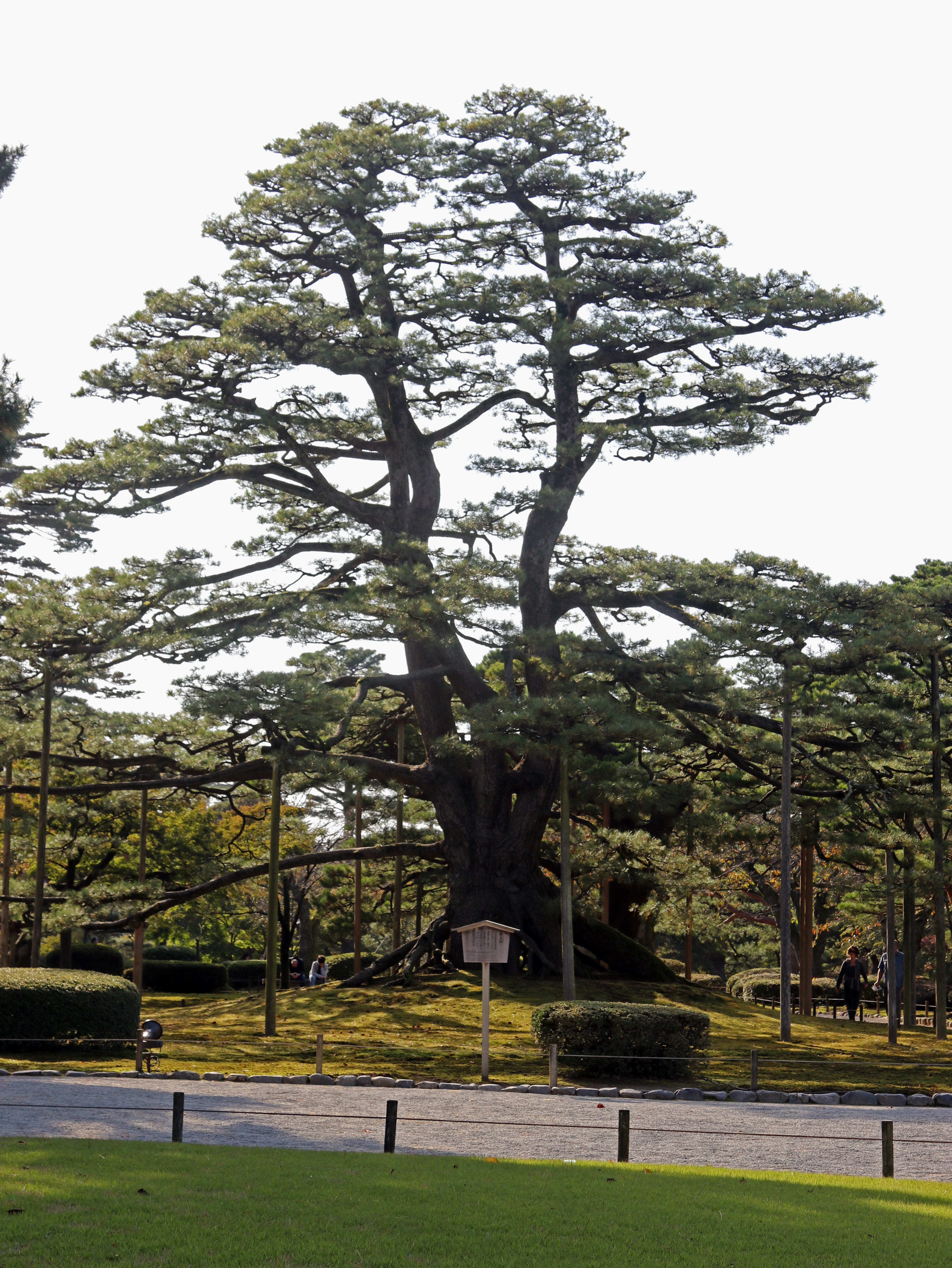
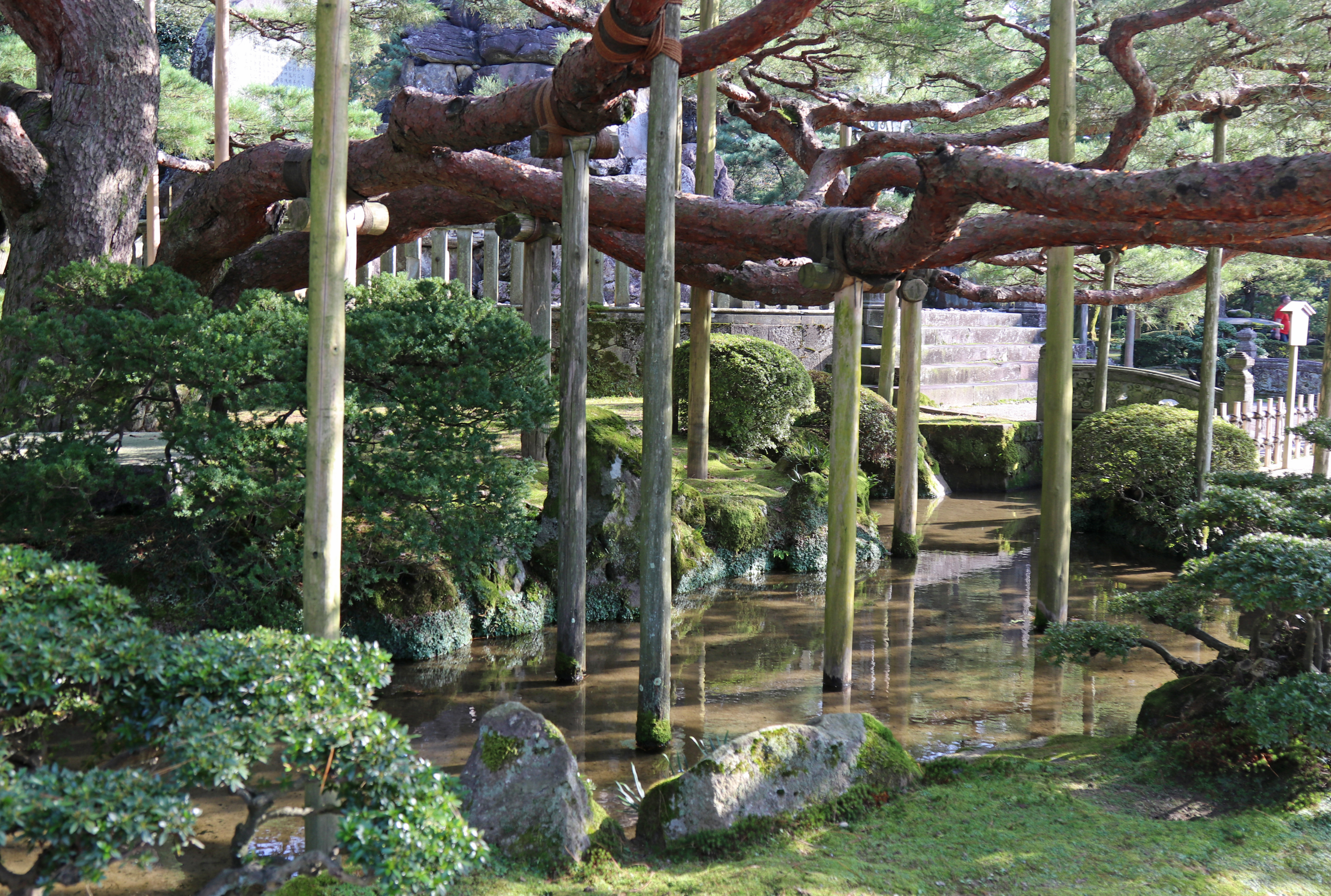
We spent over half the day in the absolutely stunning Kenrokuen, we could have spent the whole day there! But we also wanted to visit the Kanazawa Castle, its grounds and small garden as well! So, leaving Kenrokuen through the “Katsurazaka Entrance” where we had entered, we headed across the road and over the Ishikawabashi bridge, which led to Kanazawa Castle.
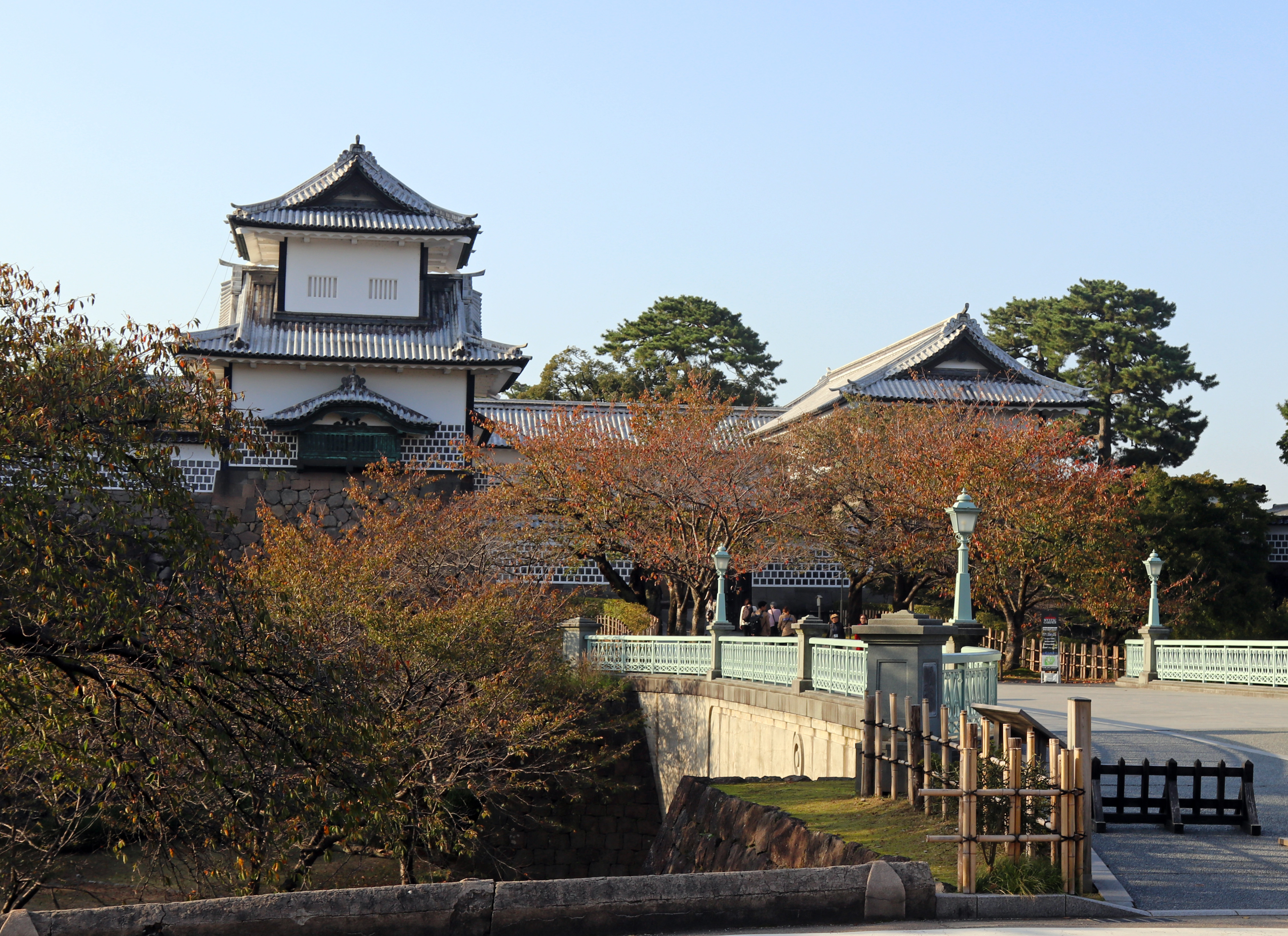
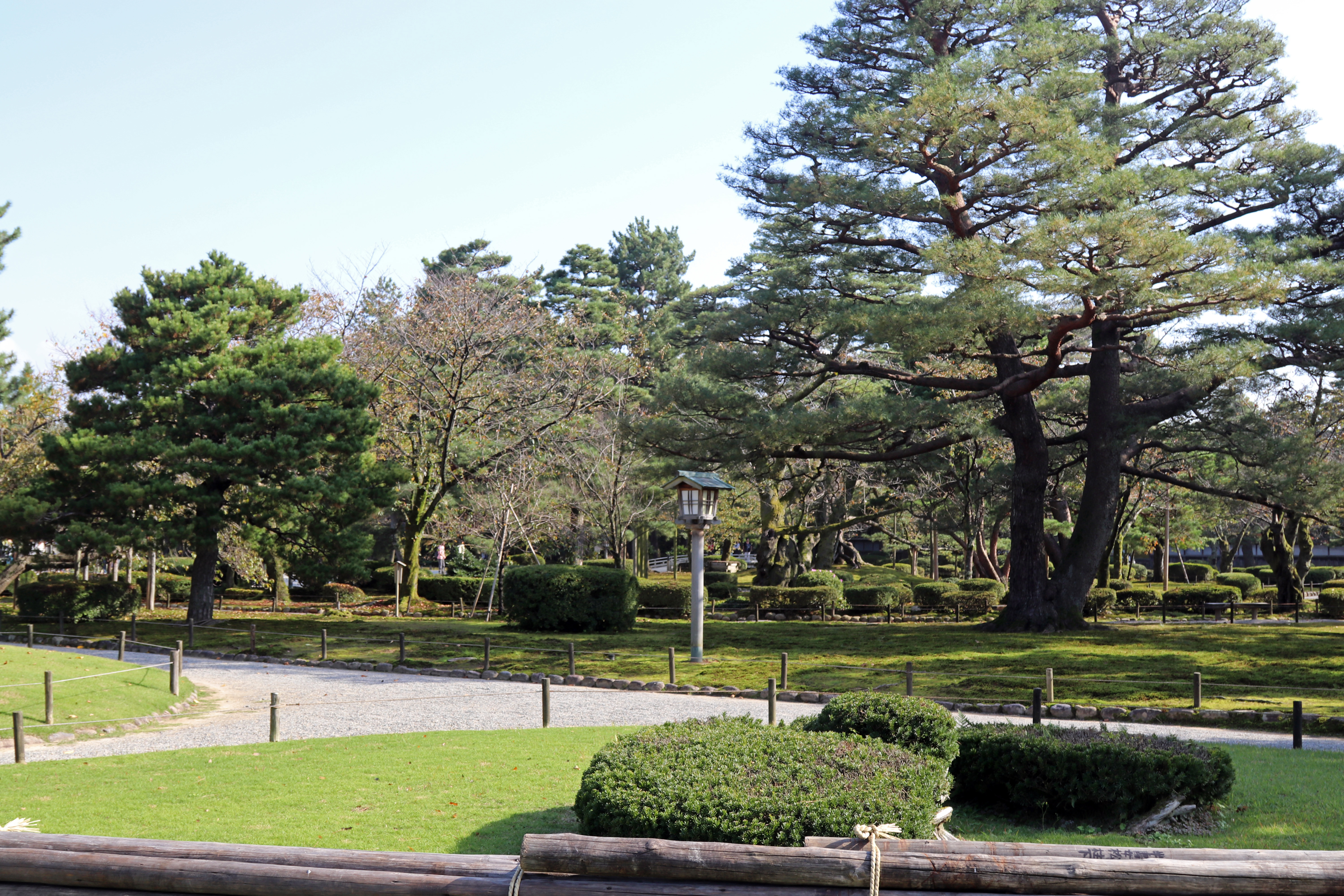
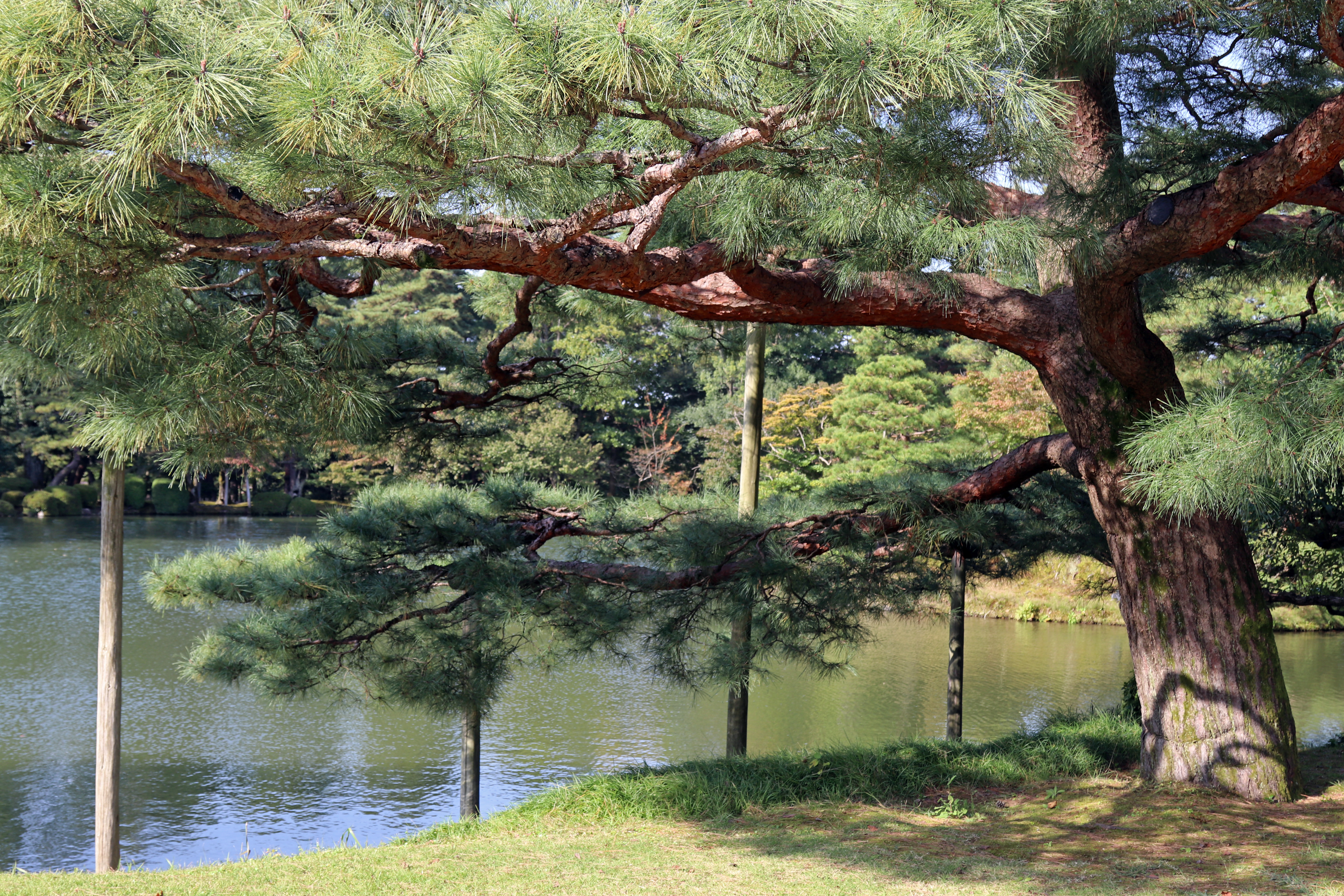
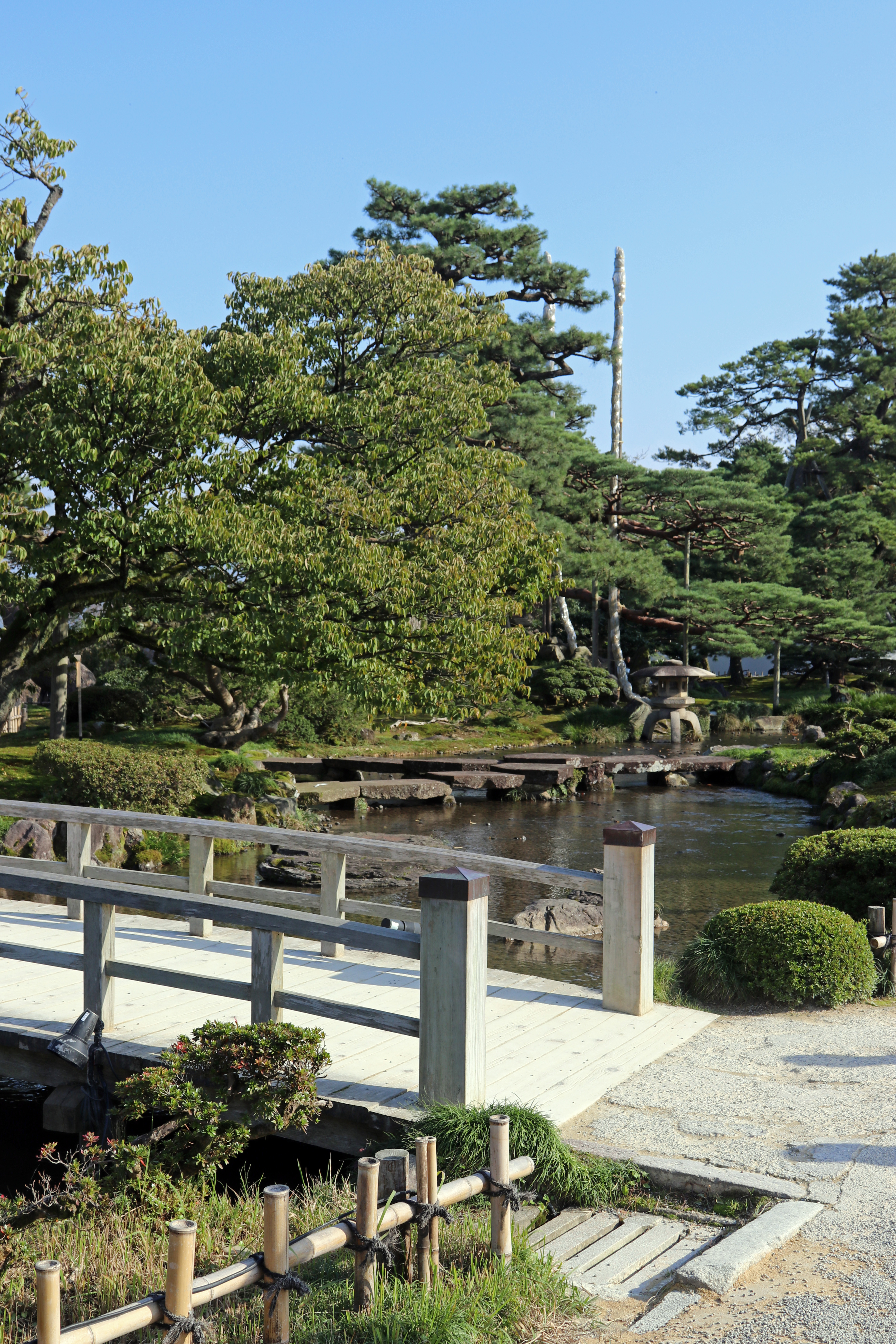
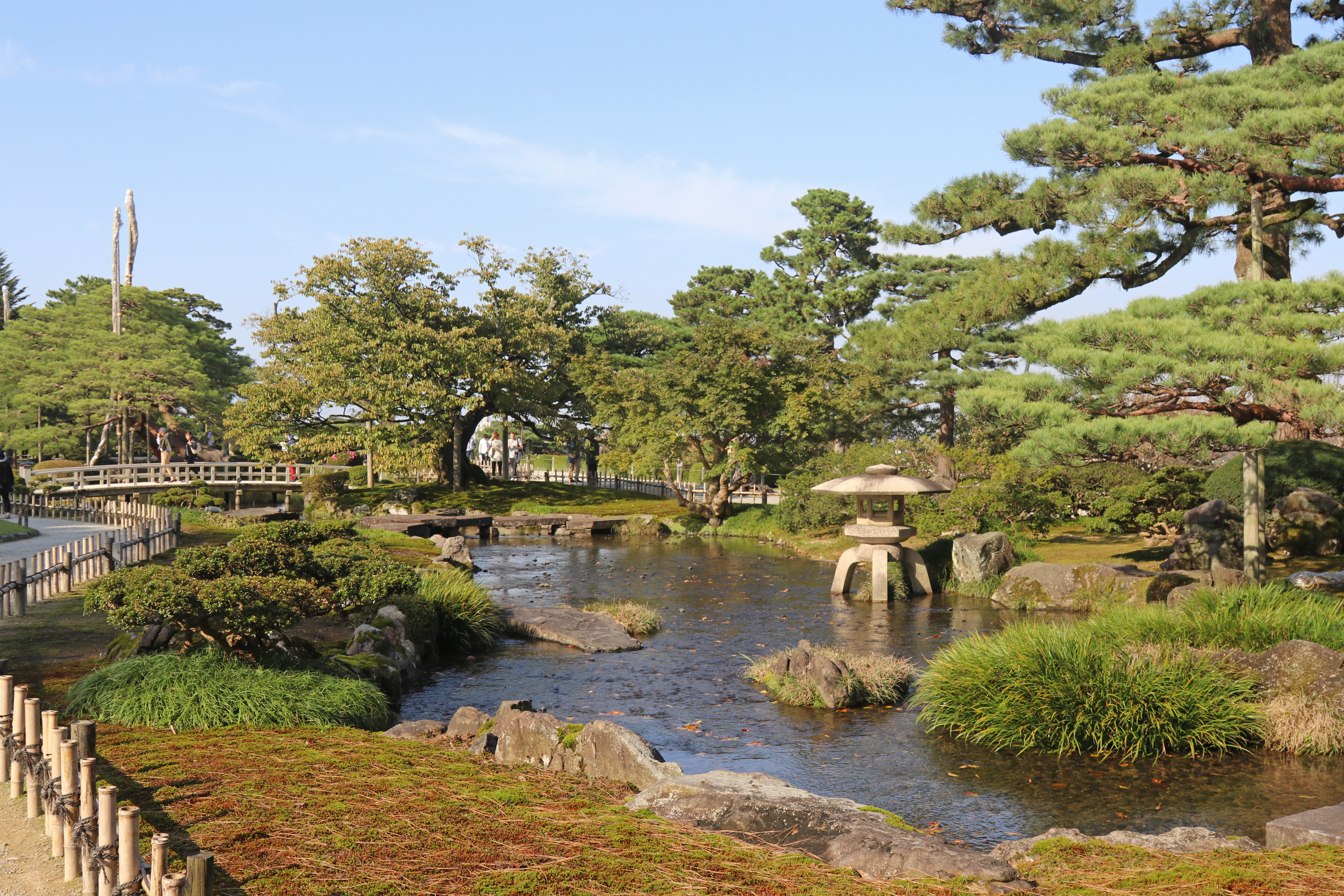
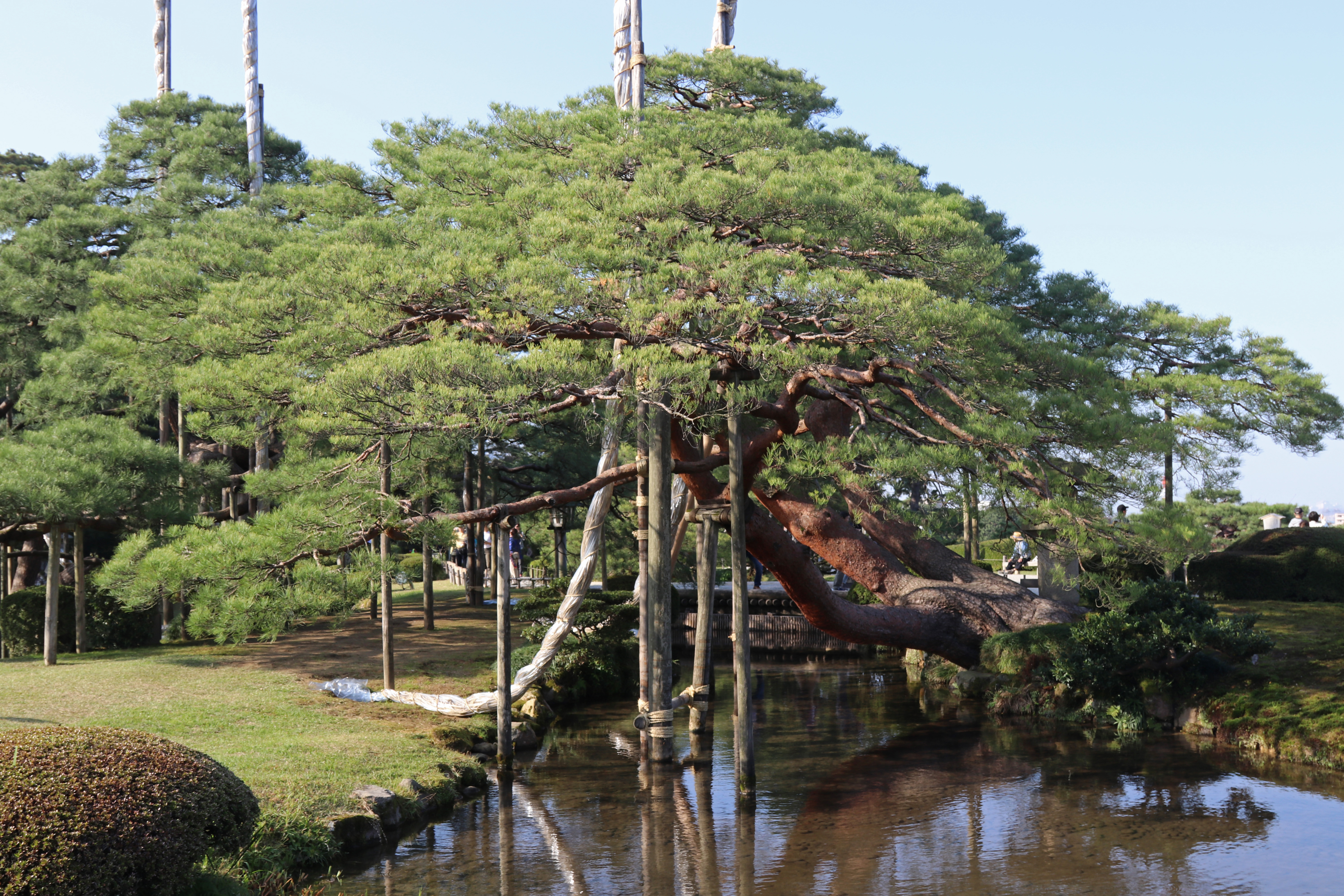
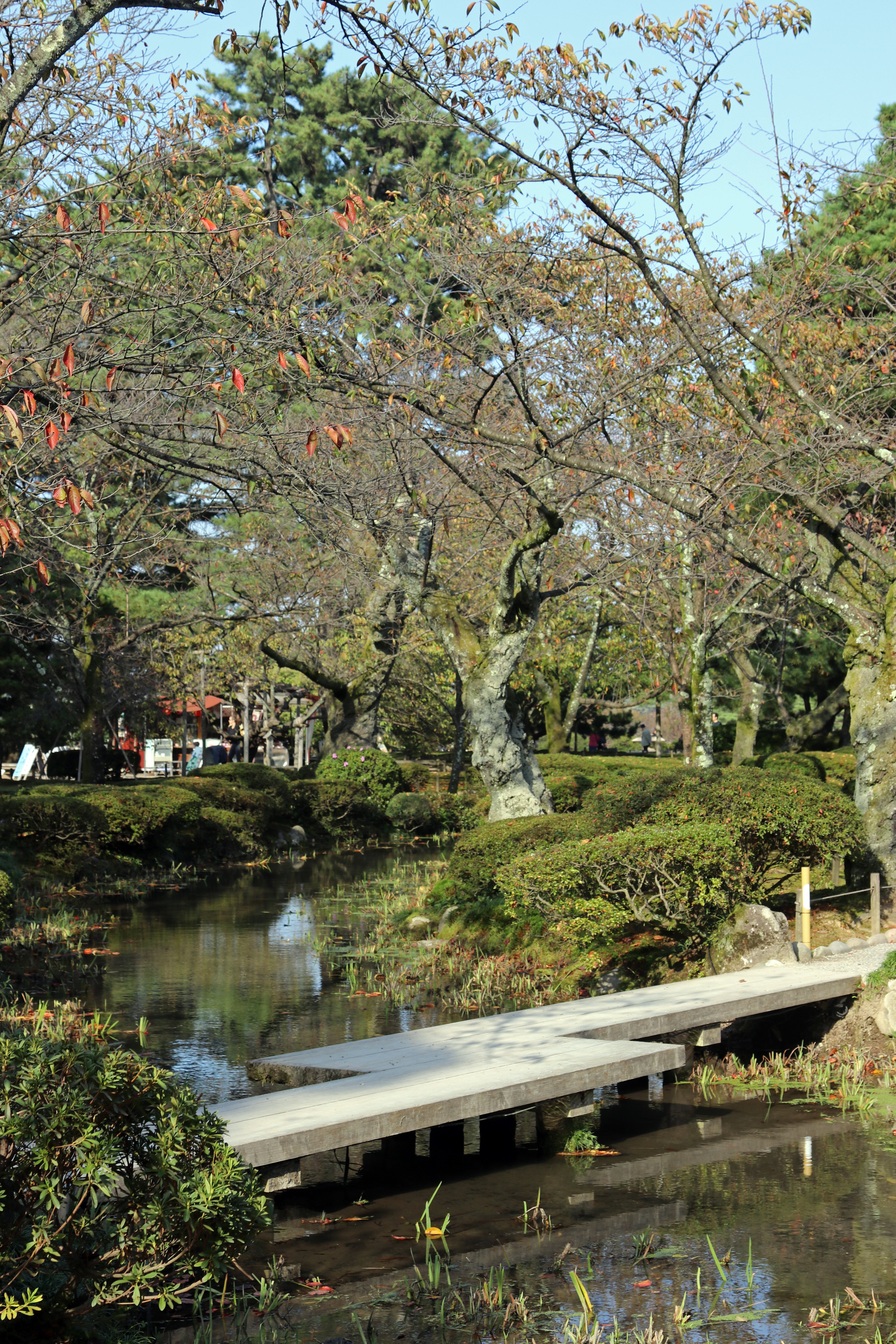
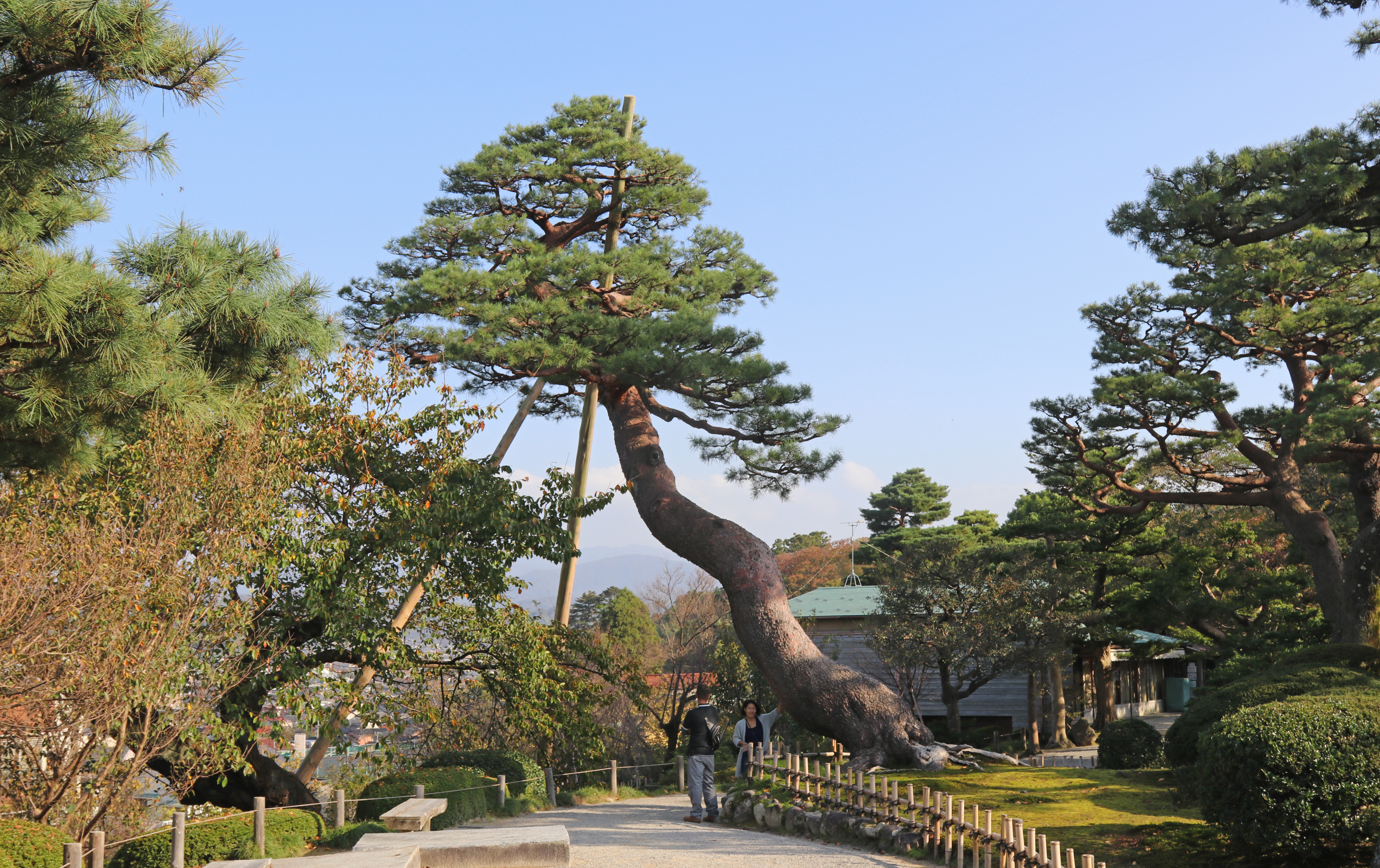
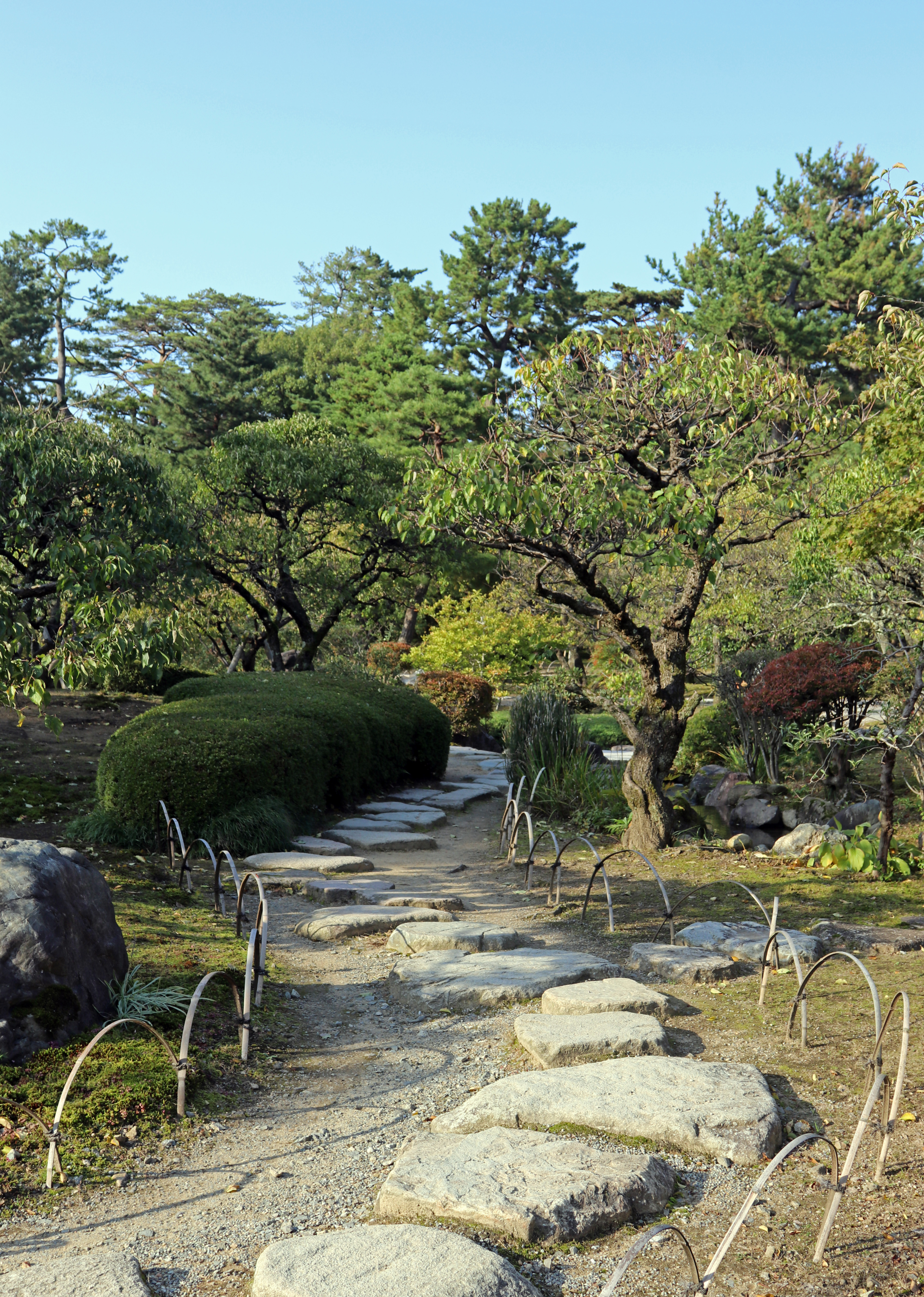

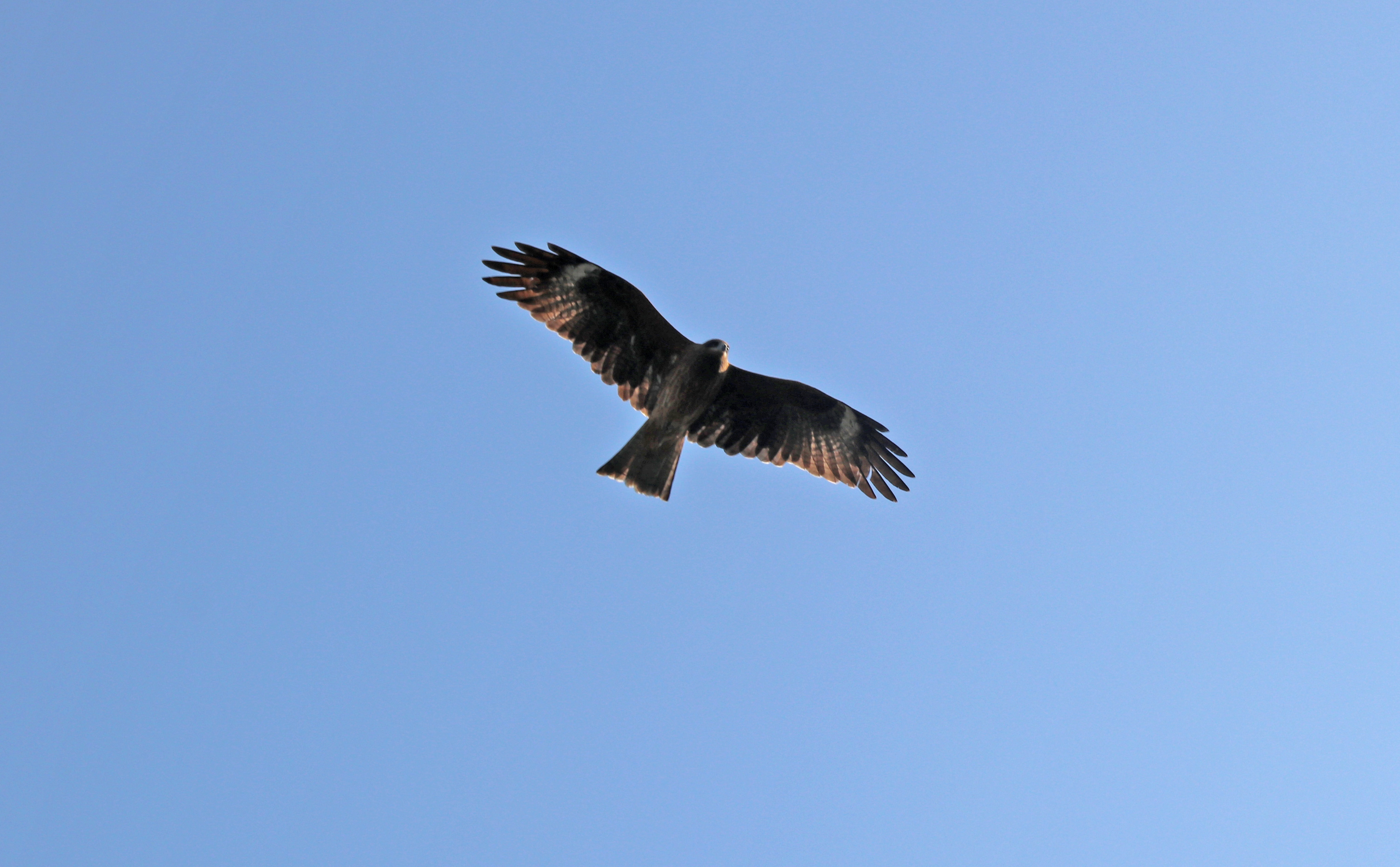
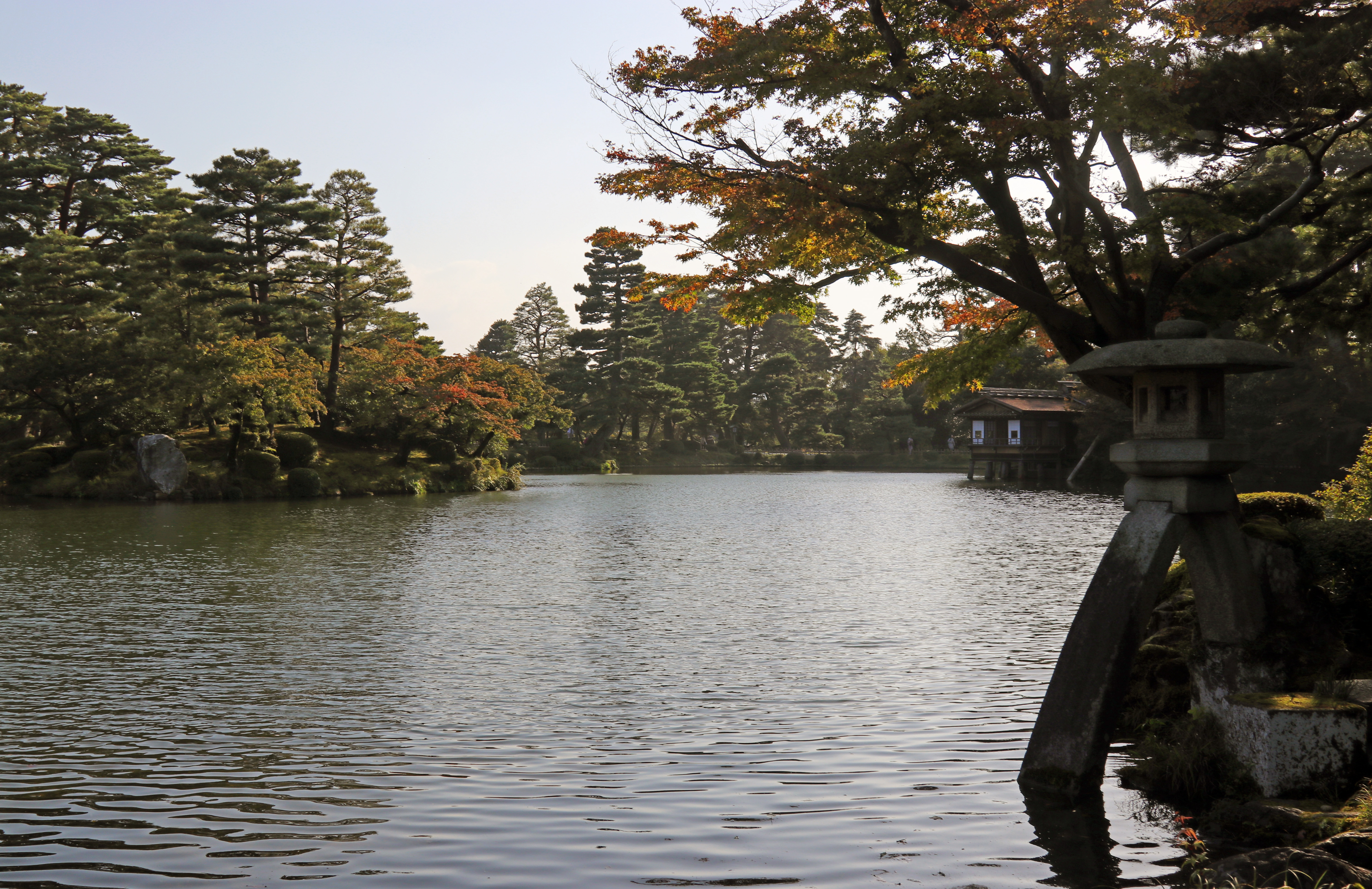
Admission to the garden was only 320 yen (£2.20),
which certainly turn out to be incredibly cheap! Along with the tickets, we
received a leaflet containing a map of the garden…which was certainly needed,
as the garden is massive in scale! So, from the admission building following
our map, we went exploring the garden!
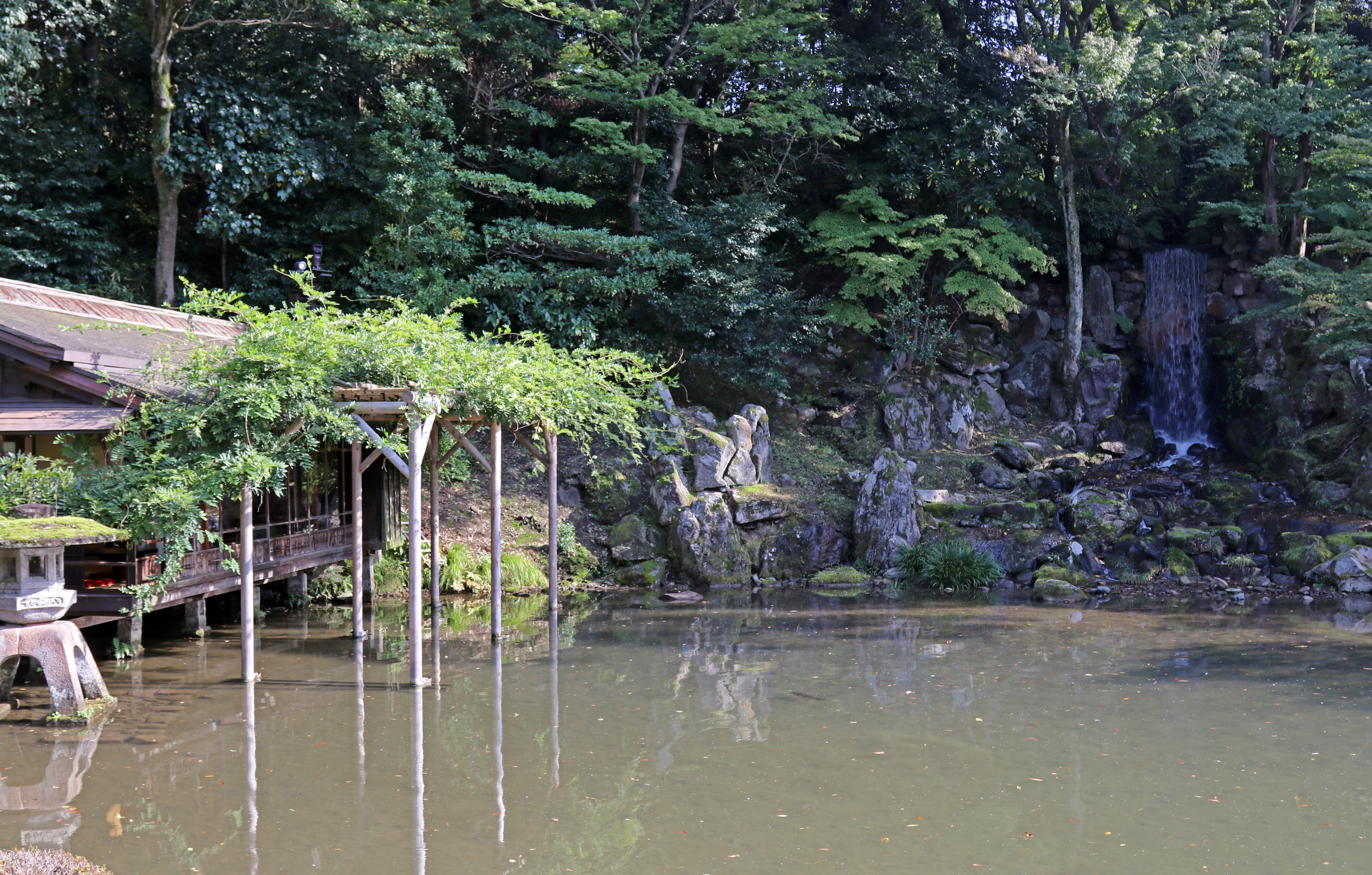
It’s name “kenrokuen” means “combined six” and draws
this from the renowned Sung dynasty garden in China that dictated six
attributes for perfection…seclusion, spaciousness, artificiality, antiquity,
abundant water and broad views. Of which Kenrokuen has them all! Strolling
around Kenrokuen helps with the understanding of this landscape concept, as the
grounds have plentiful amounts of trees, plant, stones, water features,
bridges, tea houses, viewpoints and hidden areas to discover.
It’s believed the gardens spacious grounds originally
belonged to an outer villa of the Kanazawa castle, and constructed and
developed by the ruling Maeda family from the 1620s to the 1840s, two
centuries! The garden was named in 1822
and first opened to the public in 1871.

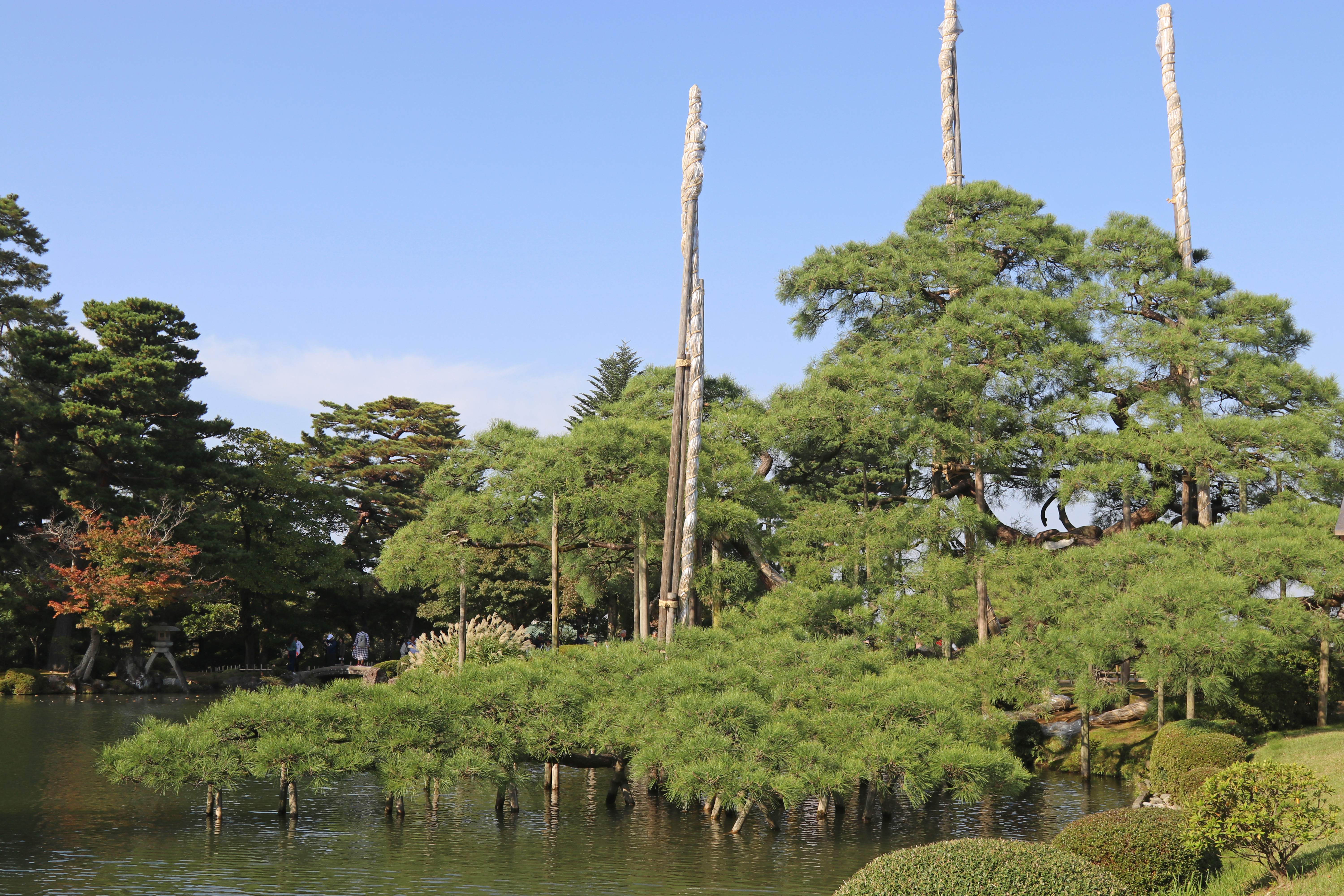
We then followed a path that led us to the large
Kasumigaike Pond that was simple stunning, containing a small island and again surround
by many large pine trees. At
the far side of the Kasumigaike pond standing tall, is one of the most
prominent pine trees in the garden, the Karasaki pine “Karasaki no matsu”. It’s
branches extent above the ponds surface and are support by many poles! This
majestic pine is one of the best known trees in the garden, and amazingly, has
grown from seed to its present size! The seed was obtained by the 13th
lord Nariyasu, from Karasaki. Including
the Karasaki Pine, many of the garden’s large pines trees are winter protected
by traditional methods, which is a feature in their own right. When we visited,
looking across the pond, we could see that the very high poles had been
erected, with many ropes attached to the top of the poles, all neatly wrapped
together down to the bottom of the tree, ready for each rope to be meticulously
tided to each branch! Which is to prevent the heavy snow damaging and breaking
the branches…quite amazing! …As seen on Gardeners World when Monty Don visited.
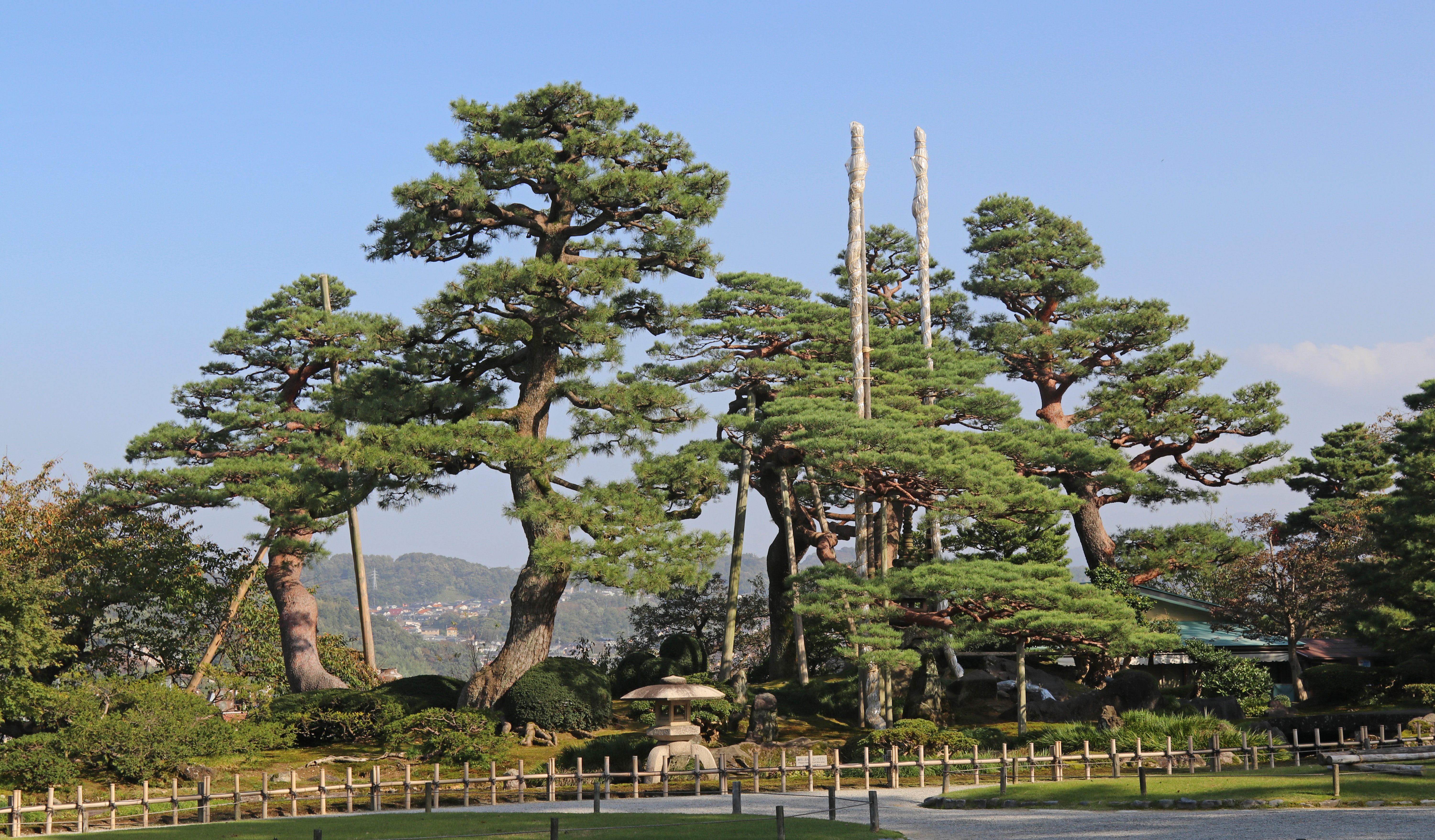
When we visited in October the autumn colours were
stunning, which are mainly provided by the many cherry and maple trees, with
the maples mostly being found in the gardens eastern side. We would also like to visit again in the
spring, as the garden at this time of year is full of blossom, with the plum
blossom at the southern end of the garden from around mid-February and the
cherry blossom at northeast side of the garden from around mid-April. As well
as the spring blossom there are also many other varieties of flowering plants
that bloom during the summer months, because of Kenrokuen featuring a variety
of flowering trees and plants, means the garden has a different look in each
season. Kenrokuen is said to also be as striking in winter, especially after
freshly fallen snow.
From the Kasumigaike pond we ventured around the garden following the many meandering paths trying our best to take in all the gardens splendours! Some of the paths and trails also led to higher ground within the garden with great overviews of the garden.
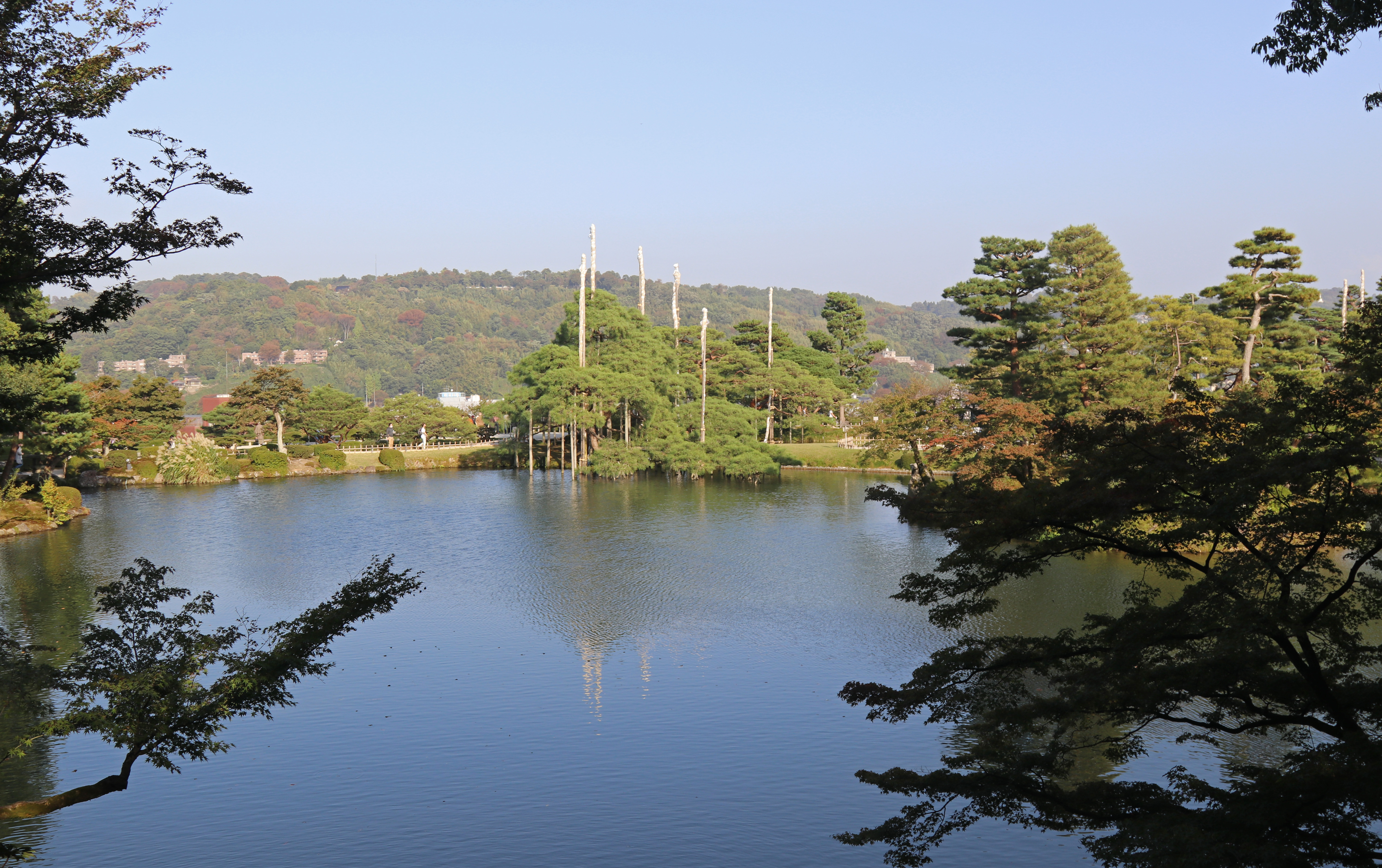
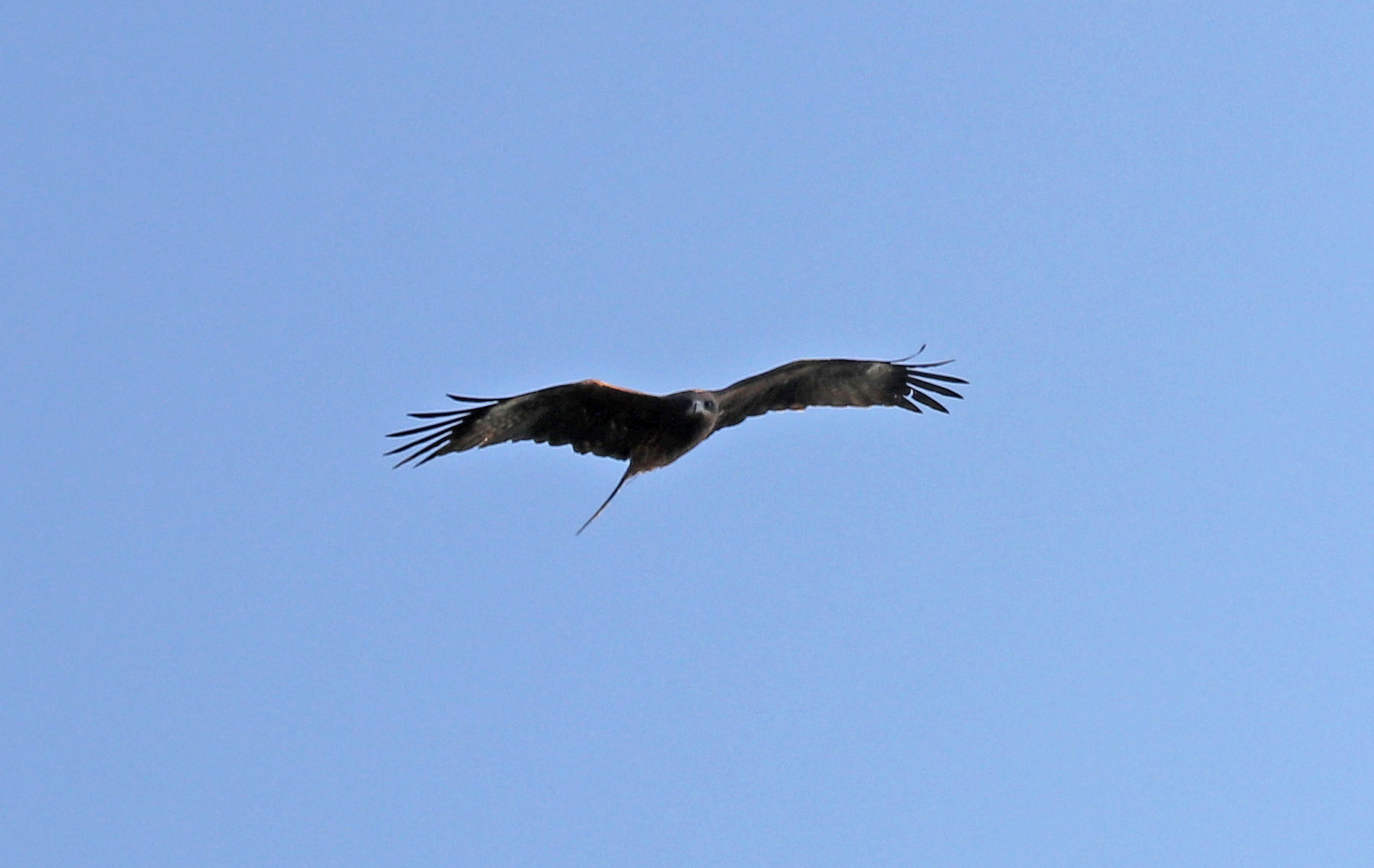
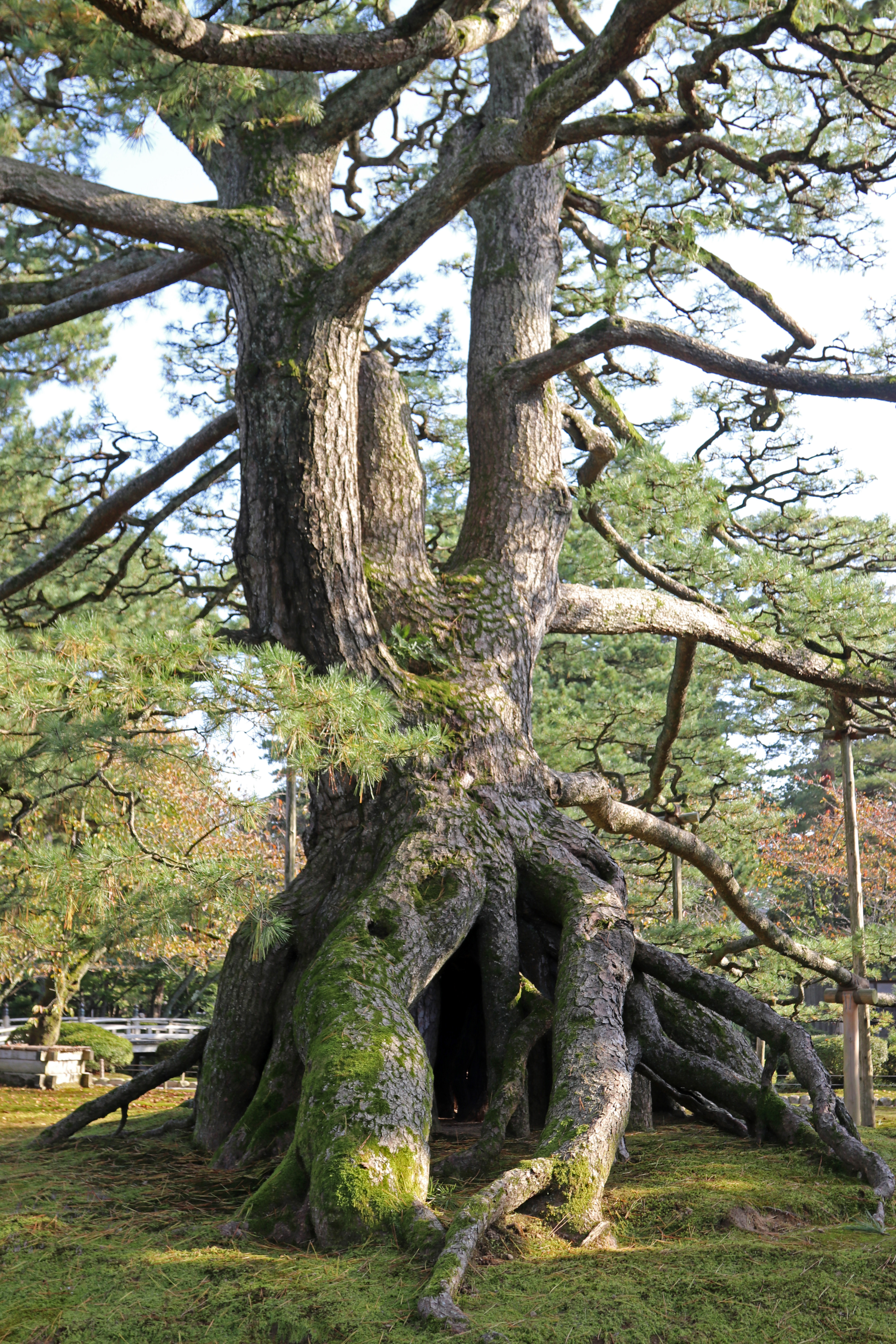
Continuing our exploring, in the eastern part of the garden there is a large imposing bronze statue…the statue is of Yamato Takeru, who was a legendary prince and dedicated to the soldiers who died in the Seinan War, a civil war that followed the Meiji Restoration. The area around the statue is therefore also referred to Meiji Monument. There were also more stunning pine trees surrounding the monument, with their branches also support by poles!
